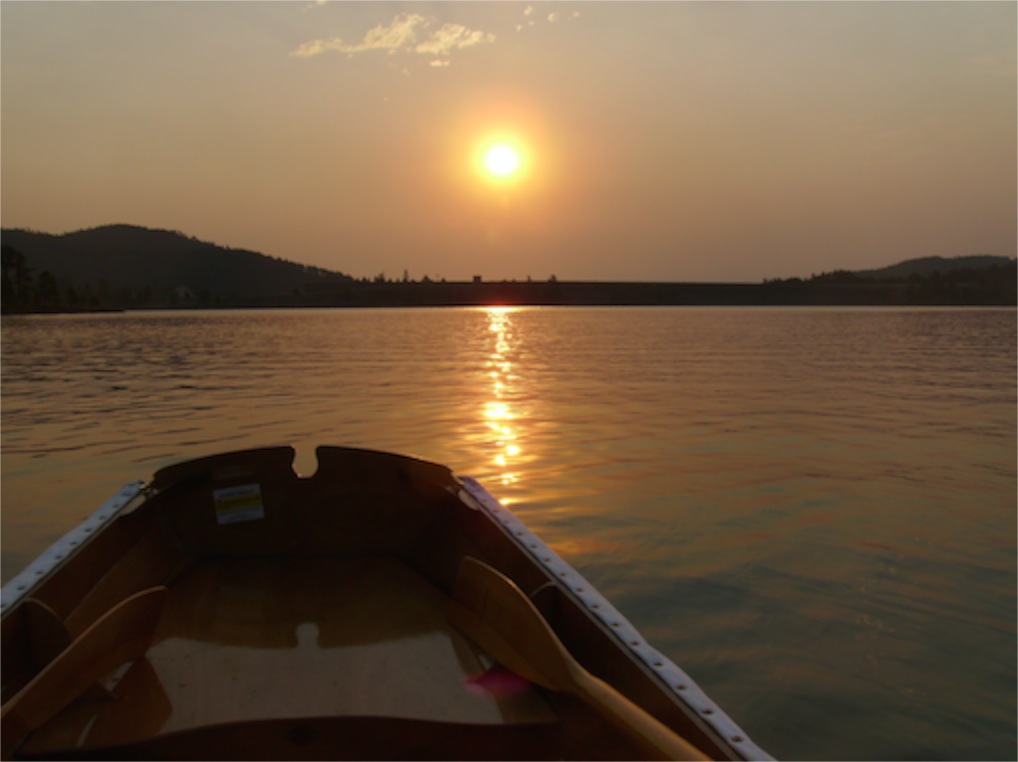Dog Days

The Dog Days are when Sirius rises just before or at the same time as the sun. The ancients believed that it added energy to the sun and caused the hottest days of the year. Although the timing of the rising of Sirius corresponds with the hottest days in the Northern Hemisphere, the reason summer days are warmer than winter has a lot more to do with the tilt in the earth’s axis than the light from a distant star.
Whatever the history, the warmest days of summer are upon us. As we bid farewell to July and begin August, the month ending today is going to be one of the warmest on record for our area. Though we have gotten a few thundershowers, the land is dry and the fire danger remains extreme. We could have a long hot month ahead of us before we feel the effects of autumn cooling. The forecast calls for highs in the ‘90’s for the rest of the week, with the possibility of a few cooler days on the weekend. At least the predicted highs aren’t in the triple digit range, of which we saw plenty in July.
I loved summers as a kid. We lived by the river and relief was only a few feet away in the form of a river that was not far from its snowy and icy source high in the mountains. The water temperature was always cold enough to turn your lips blue if you stayed in the water for a little while.
Charles Dickens reported that Scrooge had the same effect. The whole paragraph is worth reading to get to the line about the Dog Days at the end:
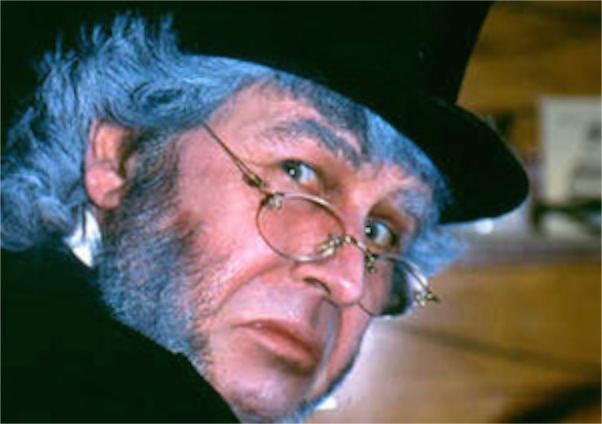
I read somewhere that the practice of calling low-performing stocks “dogs,” also has a relationship to summer. Stock volumes tend to be lowest during the end of the summer, when many traders and investors are taking vacations and paying less attention to active management and transactions. The slow stock market days picked up the term “dog days” from the weather and thus, underperforming stocks are referred to as “dogs.” Such use of the word is, in my opinion, a disservice to the animals that have donated their name.
But what I really meant to blog about is the simple fact that I’m not much for the really warm weather. Although I have noticed that losing some weight and getting into shape makes the hot weather a bit more tolerable, I seem to adjust to really hot days more slowly than I do to the colder ones. I think there are genuine differences iin people that make different individuals more attracted to different weather patterns. Some people like the summer more than the winter. I seem to be a “winter” person.

One of my “quirks” in crowds is to try to rush through the experience. I tend to walk faster, look for small openings between people and get through the crowded place as quickly as possible. Other people tend to shut out and ignore others. From my perspective a person whose shopping card is blocking the aisle and who seems to be unaware of the others who are inconvenienced is obnoxious. From that person’s perspective, my rushing and trying to pass while going town the aisle is probably equally obnoxious.
The challenge of the hot and crowded days is, of course, learning to live with each other peacefully. As our stress levels rise, we need to make special efforts to be present to one another in meaningful ways. It is a simple fact that more traffic means it takes more time to get from one place to another. My impatience will not get me to my destination any quicker. A bit of common courtesy, a smile and genuine warmth to others will serve me better than impatience.

Copyright © 2012 by Ted Huffman. I wrote this. If you want to copy it, please ask for permission. There is a contact me button at the bottom of this page. If you want to share my blog a friend, please direct your friend to my web site.
To Be
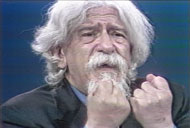
And, I believe, he was truly wise. I don’t know how he became wise, but the legacy he left to those of us who read his words is undeniably rich.
In 1961, he delivered an essay at the White House Conference on Aging entitled “To Grow in Wisdom.” In that essay he reflected on elderly people living in nursing homes. The character and nature of nursing homes has changed a great deal since he wrote. But I recognize the people of whom he writes:
“I see the sick and the despised, the defeated and the bitter, the rejected and the lonely. I see them clustered together and alone, clinging to a hope for somebody’s affection that does not come to pass. I hear them pray for the release that comes with death. I see them deprived and forgotten, masters yesterday, outcasts today.
“What we owe the old is reverence, but all they ask for is consideration, attention, not to be discarded and forgotten. What they deserve is preference, yet we do not even grant them equality. One father finds it possible to sustain a dozen children, yet a dozen children find it impossible to sustain one father.
“Perhaps this is the most distressing aspect of the situation. The care for the old is regarded as an act of charity rather than as a supreme privilege. In the never dying utterance of the Ten Commandments, the God of Israel did not proclaim: Honor Me, Revere Me. He proclaimed instead: Revere your father and your mother. There is no reverence for God without reverence for father and mother.
“In Jewish tradition the honor for father and mother is a commandment, the perfect fulfillment of which surpasses the power of man. There is no limit to what one ought to do in carrying out this privilege of devotion. God is invisible, but my mother is His presence . . ”
Now that the lives of my parents are complete, I find myself in the position of becoming an elder. I don’t think I imagined this much when I was younger. I always thought of the elderly as someone else – never me. But the years go by and the losses accumulate and time passes. Suddenly, it seems to me, I have come to a place where many of my colleagues are much younger than I. In the community of the church, I am viewed as someone at the end of my career – to old to be seriously considered for new positions in the church. It is expected that I will continue to serve for a few more years and then retire, making room for a younger person to provide dynamic leadership and renewal to the church.
I know that within a few short decades I will exist only in memory. What I have done or contributed will be complete. My time will have passed. And now, at this point in my life, I wonder what that memory might be. What legacy will I leave to future generations? Like the aging people in Heschel’s essay, I don’t really ask for much. But there is a part of me that would like to be remembered.
And sometimes, in the dark of the night, I wonder if I have done anything worthy of memory.

“To be is to do.” – Socrates
“To do is to be.” – Sartre
“Do Be Do Be Do.” – Sinatra

“Cogito ero sum.” (Latin)
“Je pense donc je suis.” (French)
“I think, therefore I am.” (English)
Descartes would find the simple fact that I question my existence proof that I do indeed exist. Perhaps, however, I am not really questioning my existence. At least I rarely question whether or not I exist in this time and place. What I wonder is whether or not I will exist in the future. I what I do and what is most important to me in this life of any consequence in the big span of history?
Maybe Sinatra is the wisest of those quoted by Vonnegut: “Do Be Do Be Do.” A little whimsy may be what is most required. We are capable of deep thought, but sometimes what we need to do is to allow the big questions to remain. And in the midst of the questions to live – and on occasion to dance.
From the Christian perspective, in the final analysis, our existence is not dependent upon our accomplishments. We do not gain favor with God by working and accomplishing things that are noticed by other humans. We are born beloved and remain beloved throughout the span of our lives simply because God is invested in relationship.
The surest evidence of my existence is that I am loved – not because I deserve it, but simply because God is love.
And love never dies.
So I will take the Vonnegut quote and to it add the ruminations of two more philosophers:
“To be is to do.” – Socrates
“To do is to be.” - Sartre
“Do Be Do Be Do.” – Sinatra
“Scooby Dooby Do!” – Scooby Do
“Yaba Daba Doo!” – Fred Flinstone

Copyright © 2012 by Ted Huffman. I wrote this. If you want to copy it, please ask for permission. There is a contact me button at the bottom of this page. If you want to share my blog a friend, please direct your friend to my web site.
Searching for Scriptures
Recently, in a flurry of summertime cleaning and organizing, some volunteers in our congregation decided to organize the books in the church library alphabetically by author. For those of us who were used to searching the library that had previously been organized by category, the result appeared to be random chaos. Sets of commentaries that had resided together for decades were spread out around the shelves in what appeared to be a random pattern. Books with multiple authors were hard to find. There are many books that are familiar to me that have multiple authors and I know only some of the authors.
Outside of a discussion about the best way to organize a library, there are some other interesting observations that came to me as I gazed at the books on the shelves in our church library. I noticed that the Bibles are not all together. Even in a system that organizes books by author, one might expect to find all of the Bibles together in the same place. After all, don’t we believe in a single scripture? I think, upon closer examination, that the Bibles are shelved in the order of their publishers, with Nelson coming before Zondorvan.
I, of course, began to try to figure out the belief structure of the library organizers. These are people of faith who give freely of their time to help their church. They are attempting to do good and provide leadership in an institution devoted not only to sharing faith, but to the process of teaching and learning about faith. Our library is specifically a teaching library, organized to support and enhance our Christian education programs. These people of faith were shelving Bibles in multiple locations. Perhaps they were expressing their belief that there are multiple authors of our sacred scriptures. Perhaps they were trying to encourage library users to search for the truth. More likely, they weren’t thinking about Bibles in a different category than any of the other books.
I doubt that those who were working in the library would claim any statement of faith from the order in which the books are positioned on the shelves.


Through a series of councils church leaders proposed a single version of the Bible, with the Old Testment in Hebrew and the New in Greek. Shortly afterward, the translation of both texts into Latin followed. All of this happened before the compilation of a single Codex containing all of the Hebrew and Christian Scriptures. The official Latin scriptures of the Roman Church weren’t standardized until around 600 AD. The oldest copy of the Hebrew Scriptures in Codex form that is know in our time dates to after 900 AD.
In 1384, John Wycliffe produced a manuscript of the complete Bible in the English language. His copy was hand written and he paid with his life for having created it.
If the Codex manuscript was the first technological revolution in Bible publishing, the second must have been Gutenburg’s invention of the Printing Press in 1455. The first book mechanically reproduced by the device was a Latin Bible. Multiple copies of books with identical text became available. Copies of the Bible that can be owned by individuals and families are only a part of the last quarter of the church’s history.

The King James Version was first printed in 1611 with 80 books. In 1885 the official version removed the Apocrypha and the 66-book version known to many Protestant Christians appeared. It is poetically brilliant and a wonderful version to read out loud. But it is hardly the first or most authoritative version of our scriptures.
These days we have new technologies to study the Bible. I have four different translations of the Bible on my cell phone. Digital reproductions mean that we no longer need rooms full of shelves to have access to books of faith.
A single “best” way to organize books will not emerge in our lifetimes. Librarians will remain essential to our ability to find information for the foreseeable future. The best search engines still do not trump experience and wisdom. But, as the song says, “The times, they are a changing.”
I wonder who else will notice the new organization of the church library. I hope a lot of people do. That would mean that a lot of people are using the space. I fear, however, that no one else will notice. This may be something that only matters to an increasingly quirky, aging pastor. This might be one of those places where I see things that others do not.
Copyright © 2012 by Ted Huffman. I wrote this. If you want to copy it, please ask for permission. There is a contact me button at the bottom of this page. If you want to share my blog a friend, please direct your friend to my web site.
The Games Begin
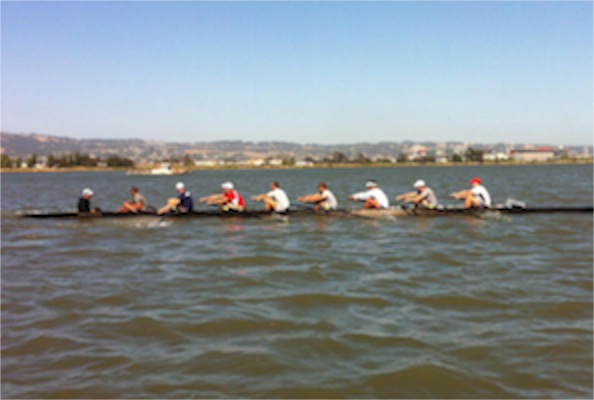
At the same time, there are sports like Taekwondo, that don’t get a lot of media hype. Paige McPherson, from Sturgis, our famous neighbor city, is one of only two women who will compete for the U.S. in taekwondo in the London Olympics this year. Unlike wrestling and boxing and other traditional fighting sports, in taekwondo, the competitors face people in different weight classes instead of just ones who are of a similar size.



The ceremony began with a quote from Shakespeare: “Be not afeard, the isle is full of noises.” The show ended with wild cheers and more than a few people scratching their heads in amazement at what they had just seen, wondering how it all fit together.
We won’t soon forget that show.


Looking back, some of the Olympic poetry winners weren’t much as poets. The 1912 winner wrote in part: “O Sport, you Beauty! . . . O Sport, you are Justice! . . . O Sport, you are Happiness! The body trembles in bliss upon hearing your call . . .” Words like that could make one want to re-think your love of poetry. It falls quite short of the Greek poetic tradition. In Homer’s Illiad, Achilles says,
“I too shall lie in the dust when I am dead.
But now let me win noble renown.”
The eyes of the world will be upon London for the next two weeks. I, for one, am expecting the closing ceremonies, like the opening, to feature more than a bit of poetry. It is, after all, Britain.
Copyright © 2012 by Ted Huffman. I wrote this. If you want to copy it, please ask for permission. There is a contact me button at the bottom of this page. If you want to share my blog a friend, please direct your friend to my web site.
Growing toward maturity
Looking back, I realize that I was emotionally immature. At the time, I thought that being an adult was primarily a matter of intellectual development. I thought that mastering the ability to think academically was what it meant to be an adult.


I wrongly assumed that people who were not college educated were somehow less mature than those who had college degrees. I thought that adulthood was more like the world of college than the world of work.
I went straight to graduate theological education from college and I enrolled in a hybrid degree program that allowed me to simultaneously work on my masters and doctorate, completing both programs in four years. My focus on the world of ideas and intellect continued.
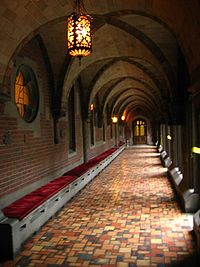
Thinking about God and pursuing the intellectual concept of God were, for me, expressions of faith. There was, and continues to be no disconnect between academic learning and religious faith in my experience.
As a reader, I tended to think that one had to read the book to the end in order to understand the whole idea. I wasn’t too taken with people who could quote a few verses and based their faith on small snippets of the Bible. But I was also making the mistake of placing more “weight” on things that came later in the book. So it was natural for me to read Jesus’ declaration in Matthew, “Unless you change and become like little children, you will never enter the kingdom of heaven,” (Mt. 18:3) as only part of the story. After all, if you to continue to 1 Corinthians, you find, “When I was a child, I talked like a child, I thought like a child, I reasoned like a child. When I became a man, I put childish ways behind me” (1 Corinthians 13:11).
I continued to think of religious maturity and intellectual maturity as going hand in hand.

I still am in love with the idea of God. I like to think and talk about God. I love to read books about God. I enjoy analyzing different perspectives and descriptions and concepts. I take seriously that bit about loving God will all your mind.
But, as Jesus reminded us, there is also that important and equal commandment: “Love your neighbor as yourself” (Leveticus 19:18, quoted in Luke 10:27). That commandment requires that I lay aside my academic elitism. It demands that I understand that those with the most education or the most complex ideas are no less loved and honored than those whose faith is less intellectual and more emotional.
Now, more than 40 years after entering college, I think I am beginning to understand a little bit of what it means to have a mature faith. It involves clear thinking and challenging ideas. It also involves childlike acceptance.
Perhaps for me becoming mature involves becoming more like a little child.

Copyright © 2012 by Ted Huffman. I wrote this. If you want to copy it, please ask for permission. There is a contact me button at the bottom of this page. If you want to share my blog a friend, please direct your friend to my web site.
Complainers and Contributors
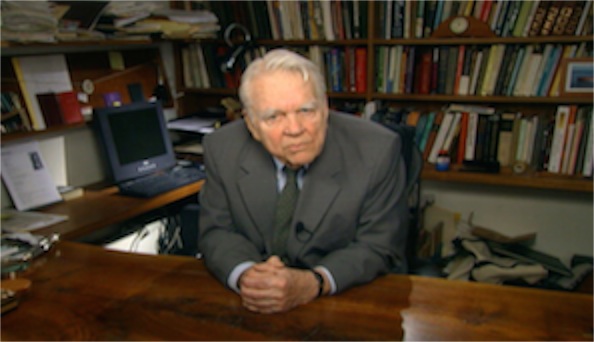
It was immensely popular. CBS started airing the segments as an experiment in 1978 and continued until October of 2011. He died a month later. His television essays have been collected into several different books. “Common Nonsense” and “Years of Minutes” were published in 2002 and 2003. In all, he appeared on 60 Minutes for 33 years and provided 1,097 commentaries.
I think that I am a little bit like Rooney. I see myself as a writer. I write essays because the process of writing is helpful in sorting out my ideas. I don’t write them primarily for others to read, but I have ended up creating this blog to share them.
I’m a bit like him in other ways, as well. Part of what made Rooney so popular was that his “rants” were often lists of complaints. He’s start “Did you ever wonder why?” and follow up with a list of things that are silly, confusing, and sometimes destructive.
It seems that a complainer can always get an audience. There are always people who will listen to the complaints.
I think that the list of complaints grows as we age as well. We often associate grumpiness and complaining with old men. I’m not sure that Rooney became more of a complainer as he got older, but it seems that way. In that, I don’t want to imitate.
If it is true that complainers can always get an audience, it is also true that the deeds of doers often go without comment. Even when people do notice the work done by others, they often start to expect that work and fail to express gratitude or even give recognition for the work.
Anyone who has been part of an organization for a while can identify “complainers” and “doers.” The distinction is so clear that it sometimes seems like the “complainers” really do not want problems to be solved. They get their pleasure and their sense of meaning from identifying problems, not from solving them. Pastors and administrators of non-profit organizations all know the experience of listening patiently to the complaints of a member, suggesting solutions, only to have the person disappointed with the solutions and unwilling to follow up. I have begun to wonder if it might be simpler to begin by asking, “Do you just want to complain, or do you want to be part of the solution?” or “What level of commitment do you bring to this problem?” or “Would you be willing to spend as much time working on a solution as you do raising the problem?”
Of course, I would never really say those things. My job is to listen, to try to sympathize, and to offer pastoral care. I just don’t want to become know as a complainer. I’d rather pitch in and go to work on solutions when I recognize problems. If writing an essay every day deteriorates into a list of my complaints, then it will be time for me to stop writing.
Elridge Cleaver said in a speech in San Francisco in 1968, “You’re either part of the solution or part of the problem.” That quote has been revised, adapted and used by a lot of people since that time. So what does it mean to be a part of the solution?
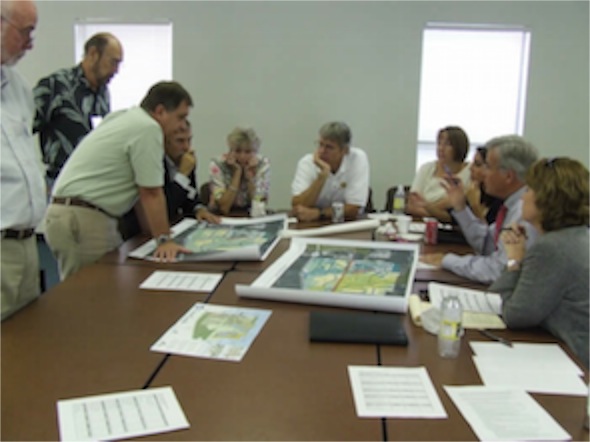
I love words. I love reading. I love talking. I love writing. I believe that great ideas deserve expression. Language is one of the tools of our culture that we ought to use. But language needs to be fresh. And sometimes actions speak louder than words. There is a time to speak and a time to keep silence. (Ecclesiastes 3:7, with the order changed) It is a tragedy to me when so many words are so badly wasted in complaining.
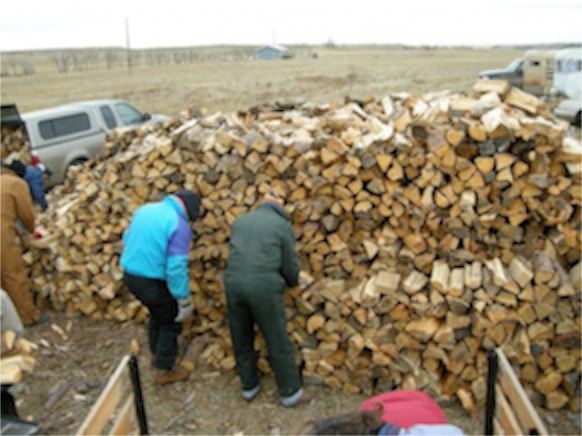
Maybe my uncle had it right all along: “Quit your yapping and get to work!” It is advice I need to take.
Copyright © 2012 by Ted Huffman. I wrote this. If you want to copy it, please ask for permission. There is a contact me button at the bottom of this page. If you want to share my blog a friend, please direct your friend to my web site.
Home from Paradise
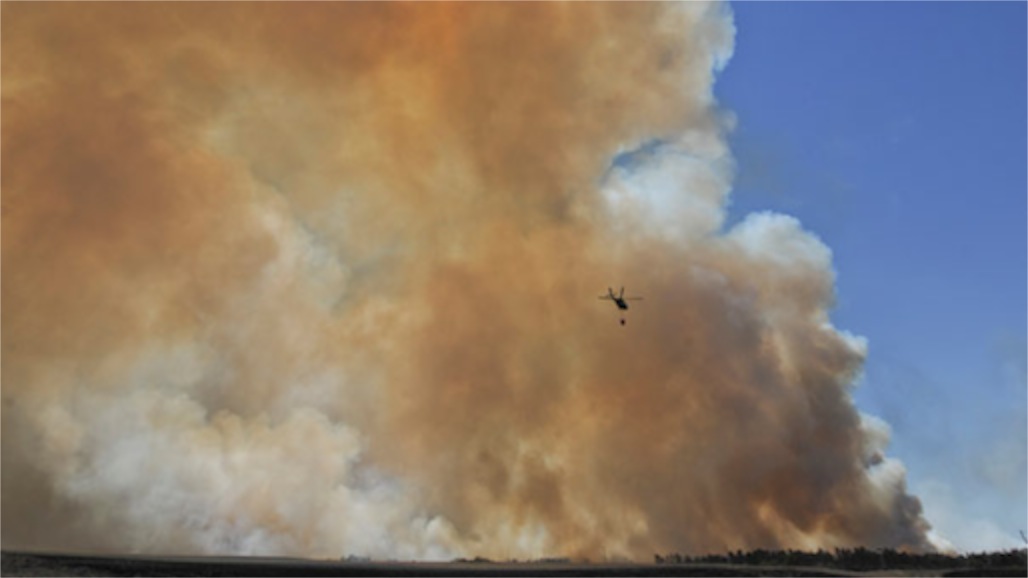
Our drive home yesterday was uneventful. As we headed up through the Sandhills, we could see the smoke plume from the Fairfield Creek Fire. As we entered Cherry County, we commented on the sign that proclaims: “Valentine and Cherry County – A Vacation Paradise!” It is nice to see a billboard that proclaims that you chose the right destination for your vacation. We might not have known that we were in paradise without the billboard. The temperature was about 85 degrees when we started driving, but was into the 90’s before we got to Valentine. The businesses that promote tubing and canoeing on the Niobrara River didn’t have any crowds or cars in the parking lots. A 14-mile stretch of the river is closed because of the firefighting operations, but those businesses aren’t exactly hopping on midweek days anyway.
The airport in Valentine was busy with two firefighting helicopters on the ground. There are a total of four helicopters and over 200 firefighters working the blaze. We saw several brush trucks and water haulers in town getting fuel or replenishing water and other supplies. As we headed north out of town, we counted four other brush trucks heading toward Valentine, including a large water tender being hauled on a flatbed semi trailer. We were looking for the smoke plume from the Longhorn complex, but couldn’t make out a single plume. The entire area is filled with smoke. Mission didn’t have the firefighting activity that we had witnessed in Valentine.
We decided to follow highway 44 home from White River. There wasn’t much traffic and just a short delay for a chip sealing operation through Badlands National Park between Interior and Scenic. We stopped at Cowboy Corner in Interior to get a cold drink and were reminded of the near 100 degree conditions as we stepped out of our air-conditioned pickup.
It took us most of the afternoon to get out house aired out and cooled down. We have window air conditioners in the upstairs bedrooms, but most of the time we don’t need air conditioning as it cools off at night and we can open up the house at night and close it up in the day to maintain the temperature. A couple weeks of being away allowed the house to trap heat and so we turned on the air conditioners and fans and by bedtime it was cool enough outside to open the windows and sleep comfortably.
This morning I’m going over my “to do” lists for work. There are several things that need to be accomplished in the next couple of weeks. We have a major planning event for church leaders on August 4. I am not a huge fan of formal planning events. I find that much of what we do in the church is to remain sensitive to needs and to allow ministries to emerge from the interests and passions of our members. Planning events tend to force ministries and sometimes the programs envisioned are not fully supported by the congregation. It seems to be a better investment of my time to listen carefully to the members and to help them with their projects.
However, from time to time, it makes sense for church leaders to coordinate their work, to review schedule, and to get a general sense that they are all heading in the same direction. Of course we are never really heading in the same direction, but when we know where others are, we can better support their vision and work.
So we’ll meet for a morning in August to make some plans for fall programs.
Susan and I have preferred to take our vacation in the fall, but that isn’t always the best time for a church to have the minister gone, so we are planning to be here with our “noses to the grindstone” throughout the fall to work for the success of the programs of the church.
The first day back from a vacation involves following up on messages, sorting through mail, and dealing with the accumulation of items on our desks. There are people to contact and it will take us most of the day to catch up on the things that have happened in our absence. There is always a sense of “shifting gears” as we transition from the pace and activities of vacation to the pace and activities of a busy church office. I’m sure that there are calls to be made and people in need of visits. We have a wedding this weekend and our usual worship, which means a certain amount of time needs to be devoted to sitting at the computer and getting all of the necessary documents in place.
Since I am in that “in between place” being at home and not yet having been to the church, I don’t have much news for today’s blog. Rather than stretch things out, I’ll quit a few words short of my usual and get on with my day. Hopefully I’ll have something interesting for you to read tomorrow.
But, according to the sign, we did visit paradise on our vacation. Funny, it was a lot hotter than I expected.
Copyright © 2012 by Ted Huffman. I wrote this. If you want to copy it, please ask for permission. There is a contact me button at the bottom of this page. If you want to share my blog a friend, please direct your friend to my web site.
In the Nebraska Forest
So maybe it is just part of my nature to take the back roads when I travel. At any rate, we decided to come home by a different route when we left Warrensburg yesterday. We took highway 50 to Lawrence and then drove down Interstate 70 to Topeka, where we headed north on highway 75 to Nebraska City. Then we cut over to Lincoln and took Interstate 80 to Grand Island and from there headed up Nebraska 2 through Broken Bow towards Thedford.
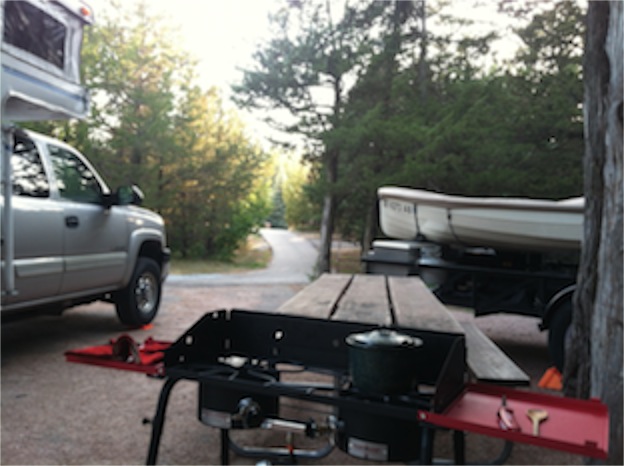
There are a lot of choices in different routes to take to get from the Kansas City area home. We could have stayed on Interstate 80 to Ogallala and then cut up through Alliance to head home. We can stay on the road we’re on through Thedford to Alliance and then cut up through Chadron. Or we can head straight north through the sandhills to Valentine. From there we can cut across to Chadron, or go up to Mission and take highway 18, or head all the way to Murdo and take Interstate 90. Or we could cut across through the Badlands on highway 44. There are lots of choices. Any way that we go will only be a few more miles than any other way and since we are traveling at a top speed of 65 with the camper and a trailer with two boats, we don’t save time by taking the Interstate. One way or the other, we’ll be home this evening and ready to start back to work tomorrow.

It seems strange for a couple of kids from Montana to be camping in the Nebraska National Forest. “Nebraska” and “forest” don’t naturally fit together in the vocabulary of people who didn’t grow up on the plains. The truth is that there wasn’t much of a forest here in the 19th century. President Theodore Roosevelt established the Nebraska Sandhills as a protected area in 1902 and agriculturalists from the University of Nebraska began to experiment with trees to stabilize the Sandhills. The attempt to farm the hills ended in dismal failure for the homesteaders. Noting that the national forests were being decimated by unregulated timber cutting, forest fires, and other results of little or no management, the scientists began to develop a tree nursery to provide seedlings for reforestation of some of the nation’s woodlands. Here at what is today the Besser Recreation Complex, on the banks of the Middle Loupe River, they established the first tree nursery in the national forest system. The Nebraska National Forest is the largest hand-planted forest in the United States. The treesd stabilized the land from excessive erosion and provide a respite from the heat of the plains in the summer. It is one of the few cool places to rest between Lincoln and Rapid City.
It is hard, however, for someone with my personality to avoid making fun of the concept of the Nebraska National Forest. A National grassland I understand, but a forest in Nebraska? Yet here we are in a series of wooded hills with a sandy-bottomed river running through the campground.

So we are camped in this forest, grateful for the shade and the smell of the cedars. It is a resting place on our way home. And when we get home we will try to be wise stewards of the little bit of ground that is our yard. And, like the people who founded the Nebraska National Forest, we are likely to plant a few more trees.
Copyright © 2012 by Ted Huffman. I wrote this. If you want to copy it, please ask for permission. There is a contact me button at the bottom of this page. If you want to share my blog a friend, please direct your friend to my web site.
Strange Stories in the News
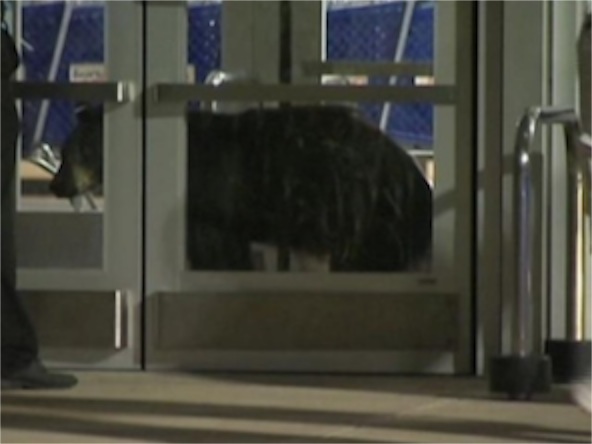
A bull market is one that exhibits investor confidence with generally rising prices and increased investments. A bear market is a declining market, with investors selling more than they are buying. In reality, a bear visiting a Sears store is not a real market indicator. Then, of course, an advertisement carefully constructed for the purpose of getting people to invest with a particular broker probably isn’t a market indicator, either. Still, getting the bull to walk a precise path through the shop was a neat trick and the ad stuck in my mind. On the other hand, I suppose that the people who saw the bear in the Sears store will remember that as well.


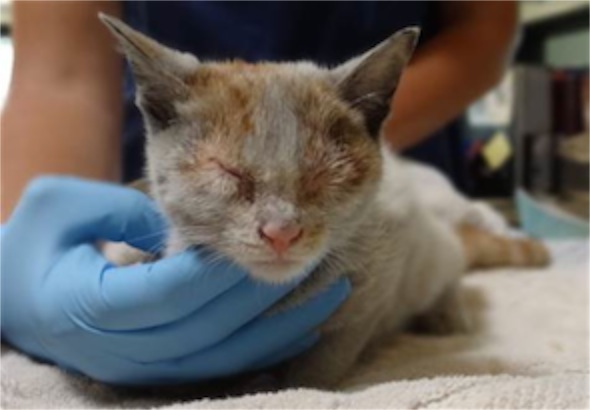
Not all animals are cute and cuddly, however. I recently read an article on NBCnews.com about a Lakewood Washington woman who was out jogging with her dog, when the dog got lose and started chasing some raccoons. Among the raccoons was a mother with her babies. The dog treed the raccoons. When the woman went to retrieve her dog, the raccoons came out of the brush. At least five of them rushed at her. By the end of the incident, the woman was left with over 100 scratches, punctures and bite wounds. A witness reported seeing at least three really big raccoons attacking the woman while she was on the ground. She was transported to the hospital by ambulance and is expected to make a full recovery. According to the story, she plans to carry bear mace with her next time she goes jogging in the woods.

I guess it must be time for me to end my vacation and head back to work. I’ve been spending too much time looking at the Internet. Actually, it doesn’t take much time at all to find all sorts of strange stories in the news. Sometimes reality is as entertaining as fiction, and much harder to believe. I read a story about a man who strapped four children to the hood of his car and was arrested after police saw him driving with the children attached to the car hood with yellow straps. In another story, a 3 year-old was found walking down a Waiarapa highway in New Zealand after using her high chair to unlatch a door and leave her home. Apparently the toddler had been left alone in the high chair for more than two hours.
Maybe I should go back to reading fiction. The two novels I’ve read on this vacation seem to make more sense than the news stories I’ve been reading.
Copyright © 2012 by Ted Huffman. I wrote this. If you want to copy it, please ask for permission. There is a contact me button at the bottom of this page. If you want to share my blog a friend, please direct your friend to my web site.
Wearing Big Boy Pants
At our home, when we were growing up, we got new jeans for Rodeo weekend, which usually landed in June. These jeans were to be kept for good occasions and we were expected to have them good enough to wear to school in the fall. Generally, there were a couple more pairs of new jeans at back to school time. The rest of the summer we wore cutoffs most of the time. In general, I didn’t pay any attention to what other kids wore. In my school, all of the boys wore jeans most of the time. We had dress slacks for church, but jeans were the accepted pants for school. There were a couple of different brands, but that made no difference to us as kids.

I’ve had to find someone to cut off the bottom of my pants ever since. The concept of finding jeans that I could wear off the rack involves wearing jeans with legs a bit too long for me.
Over the years, my waist size increased, but my inseam didn’t get any longer. It remained about an inch shorter than the smallest inseam offered by the jeans companies. For many years, the size of jeans was very predictable. The major U.S. manufacturers were very consistent in how they sized men’s jeans. This shifted as the production of clothing was moved offshore. Now the major manufacturers of jeans produce their clothing in China. I thought that might be a boon for those of us with short legs. I’ve never been to China, but the men who grew up in China that I know are all shorter than I and I have been told that I’d be a relatively tall person in that country. This, however, did not seem to be the case.
However, there was something happening behind the scenes that I failed to notice. While I was getting older, and getting used to having someone alter the length of the legs of my pants, American children were getting bigger. The manufacturers of children’s clothing added sizes 14, 16 and 18 to stock jeans for boys. And the added a new waist size as well. In place of the standard “slim” and “regular,” you can now buy children’s jeans in “husky.” I hadn’t been paying attention to these changes. I was just going into the store, heading for the men’s department and buying the shortest jeans they had in stock.
Through a careful plan with some good advice from my doctor, I have dropped a few pounds over the past six months. The weight loss has been accompanied by a shrinking of my waistline. This has meant that I have had to purchase a few new pairs of pants. So, while others were shopping recently, I wandered around the clothing store in search of a pair of jeans that would fit. After being frustrated in the men’s department, a clerk suggested that they would have my size in the boys department.
It has been 45 years since I bought my first pairs of jeans in the men’s department of the Sears store in Great Falls, Montana. This week, I found a pair of jeans that fit perfectly in the boy’s department of a store in Lees Summit, Missouri. It seems that I am a boys’ size 14 husky.
I am well aware that it is a lot easier for men to find clothing that fits than it is for women. We generally don’t spend much time shopping and we are not big fans of the dressing rooms in department stores with their semi-private doors and tiny spaces. A successful shopping trip for someone with a personality like mine involves heading to the right part of the store, selecting a brand that I have worn before and searching for the right size. I then head for the cashier and pay for my purchase. I can be out the door in 10 minutes or so, depending on how talkative the cashier is. So it isn’t fair for me to complain about my clothes shopping experiences. Still, it will take an adjustment for me to look for pants in the boys’ department.
Still it is nice to find a pair of jeans that I can wear without having to ask someone who is better at sewing than I to cut an inch off of the bottom of the legs and hem up what is left. OK, sometimes I had to have them cut two inches off the bottom of the legs. Now I can just stop by the boy’s department and be on my way.
I’m told that as we age we do start to shrink slightly. With proper attention to diet an exercise, my goal is simply to avoid expanding. I think I can manage that. But if I lose height, I may have to lose weight as well. I don’t think I could squeeze into a pair of boy’s size 12 even in the “husky” size.
Copyright © 2012 by Ted Huffman. I wrote this. If you want to copy it, please ask for permission. There is a contact me button at the bottom of this page. If you want to share my blog a friend, please direct your friend to my web site.
Blessed are those who mourn
Yesterday, as news of the horrors of the Aurora, Colorado shootings made its way across the world, we shared a similar experience in a different way. Shock and disbelief were common, followed by a sense of disgust and horror. The numbers were not accurate at first, but as the day passed, the count was high. 12 killed. 59 wounded. A man wearing a gas mask and black swat gear threw at least one tear gas canister into a crowded theatre during a special midnight showing and then began systematically firing on the moviegoers. The scale and the apparent senselessness of the crime have shocked us all.
It isn’t a movie. It is reality. And we have shared a common experience. That experience is grief. As horrible as is the loss of life and the critical wounding of so many people, that is not all that we have lost. We have also lost our sense of trust. Movie theatres are thought to be safe places. We go there to be entertained believing that our experience will be relatively free of risk. We take our families into such places thinking that we are providing safe entertainment. Now we will all think twice when entering a theatre. A note from a student in our church who works in a movie theatre caught my attention last night. His genuine expression of compassion, asking us to pray for the victims and their families, reminded me that his own workplace has become less secure and more threatening through the acts of the gunman.
In the beatitudes, Jesus declared, “Blessed are those who mourn, for they will be comforted.” It is true, but at the time, mourning rarely feels like a blessing. It takes a long time for the grief to be experienced as anything different from pain. This weekend, our nation mourns.
Unfortunately, senseless shootings of innocent victims are far too common in our world. The site of the movie theatre killings is just 20 miles from the site of the 1998 Columbine massacre. One of the victims who died, Jessica Ghawi, had narrowly escaped a shopping mall shooting in Toronto, Canada just a month ago.
Part of what we have lost is our sense of safety in places that we once thought were safe.
There are plenty of unanswered questions. What was the motive behind the shootings? How can one person purchase tear gas canisters and over 6,000 rounds of ammunition in less than 60 days without raising any concern? What can cause any human being to go on such a rampage against complete strangers?
The grief of sudden and traumatic loss is often accompanied by questions that remain unanswered. We will never know what the shooter was thinking. We can never fully understand the circumstances that caused an individual to so carefully plan such a destructive act.
So we mourn over the deaths of people we never met. Just as the victims were strangers to the shooting, they are strangers to those of us who live far away from the tragedy. But we allow their lives to enter into our consciousness. We find points of connection with their families as they suffer this immense tragedy. We cry real tears of grief with those who have lost so much so suddenly. If a researcher were to conduct MRI scans of a cross-section of our nation’s population, it would reveal that we are sharing a common experience and our reactions are also common.
One of the blessings of mourning is that it brings the community together. When I meet with families who have experienced a sudden and traumatic loss I experience the first stages of this process. As news of the loss begins to circulate through the community, people begin to come together. Friends arrive to offer their support. Family members receive the news and draw together. Food starts to appear. Offers of help arrive. And slowly, the community begins to adjust to the reality of a loss that cannot be restored.
You don’t get over such a loss. You survive it. And survivors gain skills and abilities that help them face new life experiences. But no one can survive the journey of grief alone. Support is essential as the critical adjustments are experienced.
Another blessing of mourning is the understanding of how precious life is. We are, at the same time, both incredibly strong and incredibly fragile. The human body is amazing in its ability to endure injury and recover and its vulnerability to permanent injury and death. To be alive is to risk dying. We don’t think of that truth very often. Loss and grief remind us of how precious the gift of life is and how carefully it must be protected.
So there are no pictures with today’s blog. It is not a day for pictures. It is a day for reflection and grief. It is a time for mourning. Among my prayers for this time are prayers that we will together experience the blessings of mourning. In order to do that we must allow the grief to move at its own pace and the healing to come in God’s time not our own.
Copyright © 2012 by Ted Huffman. I wrote this. If you want to copy it, please ask for permission. There is a contact me button at the bottom of this page. If you want to share my blog a friend, please direct your friend to my web site.
World Economy
We took a couple of days to explore Central Missouri. We drove down to the Harry S. Truman Reservoir and then drove around the Lake of the Ozarks. The two near-by reservoirs have created a thriving tourist and recreation economy in the region. Some of the elements of this economy are familiar to us. Helicopters sit waiting fare-paying customers to take short rides to view the area. Billboards proclaim fudge and sweet shops and ice cream vendors. There are caves to explore and water slides, golf courses and barbecues, vacation home rentals and shows. I don’t think we have any parasailing in the hills, however. One company operating near the dam that creates the Lake of the Ozarks touts a 600’ tow line for those who want to rid above the water towed by a speedboat.

We like to buy local food when we travel. Tasting regional variations in food is part of the joy of traveling. Were we to eat only at franchised restaurants, the food would be the same from place to place. That just isn’t our style. We like to sense the differences when we are away from home. Food is a great way to learn about a place. We’ve never succeeded in growing cantaloupes in our garden and I have never produced a tomato the size of the ones we bought. The flavor was excellent.
Even purchasing things from small, local vendors does not remove us from the wider economy. We noticed that the Amish market was selling apples that had been trucked in from Washington. At another stop, I purchased a jar of what I thought was a local barbecue sauce. It turned out that the sauce was from Texas. Our food travels more than we do. I have read that the average American could save more fuel by making careful food choices than by the choice of what kind of car to drive.
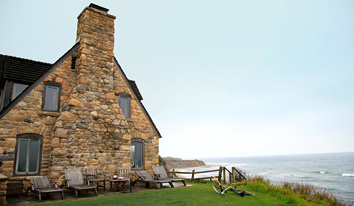
There is a bit of a stir over the Ralph Lauren-designed uniforms that will be worn by the athletes of the United States Olympic Team in London this summer. They were sewn in China. Senate Majority leader Harry Reid suggested that “They should take all the outfits, put them in a big pile and burn them and start all over,” in response to an ABC news report that the uniforms had “made in China” labels on them.

Unlike the teams of many nations, team USA receives no government funding for its organization, training, uniforms or other expenses. All of the money for the team is raised privately. This means that the team needs to watch its expenses. And wearing uniforms sewn in China is less expensive than wearing ones sewn in the USA.
I’m sure that the decisions about Olympic team uniforms are intensely political and there are factors of which I am unaware. We live in a complex world with a complex economy. The presence of a “factory outlet” doesn’t mean that there is a nearby factory. A food stand featuring local produce may sell fruit that has been trucked more than a thousand miles. A team participating in an international competition participates also in an international economy.
We live in an amazing world.
The tomatoes, by the way, were delicious.
Copyright © 2012 by Ted Huffman. I wrote this. If you want to copy it, please ask for permission. There is a contact me button at the bottom of this page. If you want to share my blog a friend, please direct your friend to my web site.
Hot times in Osage Country
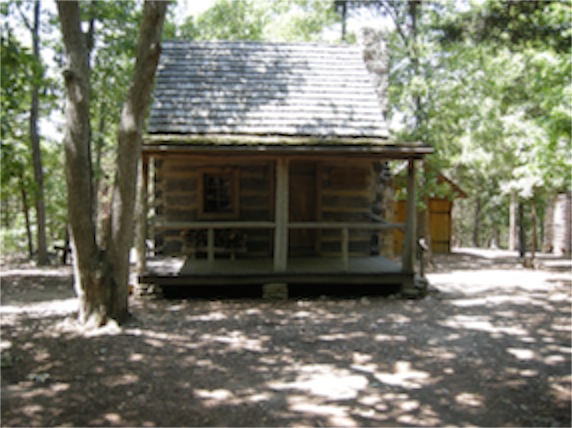
So was flooding. The river flooded every year. Some years the floods were devastating, inundating homes and businesses and wreaking havoc in the fertile farmlands. Of course the fertility of those lands was dependent on the rich silt deposited by the floods, but when the waters rose, the farmers lost their crops.

We’re camped in Harry S. Truman State Park this morning, along the shores of the giant Truman reservoir that was formed when the Osage River was dammed. Construction of the dam was begun in the early 1960’s with the completion of the dam in 1978. There are a large number of campgrounds around the lake on lands managed by the Army Corps of Engineers, the State of Missouri, and other governmental entities. The land was purchased from individual landowners in anticipation of the lake’s rise. The campgrounds are nearly empty today. I’m told that fall is the high tourist season in this region.
I’m beginning to understand why the mastodons and giant sloths abandoned this country. The high was around 104 degrees yesterday. We’re camping in a basic site, without electricity or water hookups. We spent the day outdoors yesterday, mostly seeking shade. It was even too hot to launch a rowboat into the water, which would have been a recipe for sunburn during the middle of the day. The lake was quiet until nearly 8 p.m., when we launched our boat for a row. A few fishermen also ventured out for two or three hours of fishing before turning in when it got dark. We watched the sunset from the boat, which was lovely.

When we returned to our campsite, it was still too warm to sleep comfortably. We’ve become spoiled by ready access to electricity. We have a small air conditioner in our camper that we use to keep things cool for sleeping when we are plugged in. Even with opening up all of the windows, there was almost no breeze to flow through the camper and our bet was fairly hot.
People have been living in this country for centuries. They have learned how to move slowly during the heat of the day and find rest at night. We’ve become spoiled by our modern conveniences and have lost some of the skills of survival. We’ve grown soft with the modern conveniences of our age.
The insects have it right. They go dormant during the heat of the day and only come out as the evening cool comes on. They spend the nighttime gathering food and flying about and then retreat to the trees and shrubs during the day. The skinks and other cold-blooded creatures dig into the mud and wait for a cooler season before emerging. We humans try to maintain our own schedules and go about our activities as if we were not affected by the weather. Our air-conditioned cars convince us that it is comfortable until we step outside to take a hike or visit an interesting place.
So this morning, we’ll go rowing before it gets too warm and then pack up our camper and move on before the mid-day heat. We are returning to our daughter and son-in-law’s home today where we’ll plug in, turn on the air conditioner and sleep in comfort.
But it is good to get out camping and to reconnect with the realities of this world. Leaving some of the luxuries behind is good for us. Remembering the cycles of the natural world is important.
In the scheme of things, our visit to this place is very short. The effects of human habitation, even the giant dams and reservoirs are tiny in comparison to the movement of the glaciers in the ice ages. From a geological perspective, our impact is tiny. But while we are here we are able to behold the beauty and see the wonder of this place.
Even in the triple-digit temperatures of mid summer it is worth the effort to visit this place.
Copyright © 2012 by Ted Huffman. I wrote this. If you want to copy it, please ask for permission. There is a contact me button at the bottom of this page. If you want to share my blog a friend, please direct your friend to my web site.
Friends
High school brought a few new friends as students from country schools joined our class for high school.
Along the way I made a few friends who lived in other towns, primarily through church camp. These friends were often from families my parents knew because they were active in the statewide church conference and our whole family was involved in church camp.
When I went off to college I made a few new friends, but my circle was pretty small. I was a bit younger than my classmates and I had to work hard to keep up. The activities of the campus chapel were the primary source of friends.
At seminary, new friends came easily. We were in a small community of like-minded people pursuing similar academic interests.
Over the years a few friendships have remained strong. There have been friends who we knew for a while and with whom we lost touch and others who have become life-long friends. Distance seems to make no difference when it comes to friendship. Living in different cities, even living on different continents, has not deterred our friendships.
Being a pastor changed the process of making friends a bit. A pastor needs to be fair in relationships with the entire congregation. There can’t be special members of the congregation who receive special treatment or special attention from the pastor. At the same time, the work of a pastor brings one close to the people served. It is natural for warm feelings to develop between pastor and members of the church. Still, there are limits to “letting one’s hair down.” A pastor can’t complain about his or her work to the people served. There are stories that are told to the pastor that must be held in confidence. There is a sense of always being a bit “at work” even in casual settings that involve members of the congregation. Still, over the years, we have developed life-long friendships with members of each congregation that we have served.
We have developed friendships with colleagues over the years. In each setting, there were pastors serving other congregations who became friends. Denominational meetings tend to be gatherings of friends and a bit like reunions for us. There have also been strong friendships that have developed with pastors of other denominations. I have long participated in ecumenical Bible study with other pastors and have found friends among clergy from other denominations.
I was thinking about friendship yesterday because I was taking a look through my Facebook “friends.” The social network has provided me one way to connect with others. I was a slow adopter. I signed up for Facebook when a nephew was traveling in South America. The site gave me access to his travel photos and information that I couldn’t have obtained directly from any other source. In the beginning, it seemed to demand more of my time than I was willing to give. I turned off the alerts that notified me when contacts in the network post information to their walls. I didn’t initiate many new friend contacts. I responded when asked to be someone’s friend and usually said, “yes” if it was a person that I knew. I still don’t post much on Facebook. I’ll occasionally respond to the post of a friend. I also post notices about church activities on the site. Our church has its own Facebook page and we have a Facebook group as well. I try to check out those pages from time to time.
I use an automated program to make church posts to Facebook. That means that I am not actually visiting Facebook when the posts appear. I decide what announcements need to be made and when they should appear. Then I enter them into Hootsuite and schedule the posts. Hootsuite posts to multiple places in Facebook and to a couple of Twitter feeds at the scheduled time, whether or not I am sitting at my computer. This creates some confusion, because people see my posts and assume that I’m looking at Facebook, which I probably am not doing.
I also created a profile on Linkedin, a site that is supposed to focus on professional relationships. Linkedin is owned by the same company that operates e-harmony, an online dating service. That results in some unwanted e-mails from time to time, but the development of a professional network is interesting. The web of relationships is different from my Facebook network.
It is clear to me that the term “friend” has a wide variety of different meanings. I have people who are included in my list of friends with whom I feel close and others I feel that I hardly know. There are folks on the list for whom I have warm feelings and fond memories and others who seem to me to be quite distant.
The relatively new term “frenemy,” sometimes spelled “frienemy,” refers to someone who might be an enemy pretending to be a friend. It can also describe a friend who is also a rival. Businessweek reported that the increase of frenemies in the workplace is the result of increasingly complex relationships that intertwine personal and professional relationships. The article reported that there has been an increase in close personal relationships that bridge professional and personal spheres. I suspect that these relationships have always been present, but the article seems to say that they are more common in the current social environment than they were in previous generations.
In the Gospel of John, Jesus speaks of his disciples as friends. The distinction he makes is that the relationship is not hierarchical, but one of equals. Jesus also speaks of the power of love. “You are my friends if you do what I command you. What I command is that you love one another.”
Facebook, Linkedin, Twitter and other social networks are simply tools. They are neither good nor bad. They do not make friendships. For those who love genuinely, however, they can be a way of staying in touch. I still prefer face-to-face contact. I’ll use the tools, but find them no substitute for spending time with my friends and demonstrating my love through actions.
Copyright © 2012 by Ted Huffman. I wrote this. If you want to copy it, please ask for permission. There is a contact me button at the bottom of this page. If you want to share my blog a friend, please direct your friend to my web site.
Hot and Dry

The high-pressure system that is parked over the Rockies looks to remain, forcing storms to go north, across Canada, instead of dropping precipitation on the nation’s midsection.
These days, there are a lot of farms that are covered by some form of crop insurance. That should provide some back up for farm families. Rising prices are good news for those who have any crops to sell. The people who are worse hit by the economic effects of the drought are the most impoverished. Poor people spend the largest amount of their total budget on food, making them the most vulnerable to the effects of higher costs. Of course it takes time for the effects of the drought to reach the grocery stores, so it will be months before we know the full effects of this summer’s drought.
Last year this part of the country was dealing with the effects of record flooding in the Missouri River basin. This year it is living with drought. It seems that the weather is never “normal.”
Back in the late 1970’s and early 1980’s, we were serving two rural congregations in Southwestern North Dakota. The economies of both communities were based in agriculture. Raising cattle for beef was the center of the ranch economy, with wheat and sunflowers being the major crops outside of hay production. In those days, my routine involved having coffee at the café most days. It was a gathering place for the community. I could see a lot of the members of my congregation by simply stopping in to the café. The talk at the café was about the weather most days. I used to joke that one thing you can count on in North Dakota is that the weather is never normal. “It didn’t used to be like this,” was a common refrain.
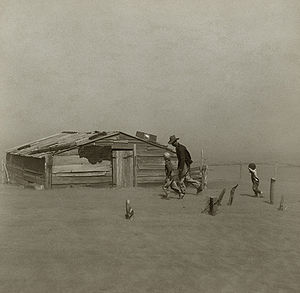
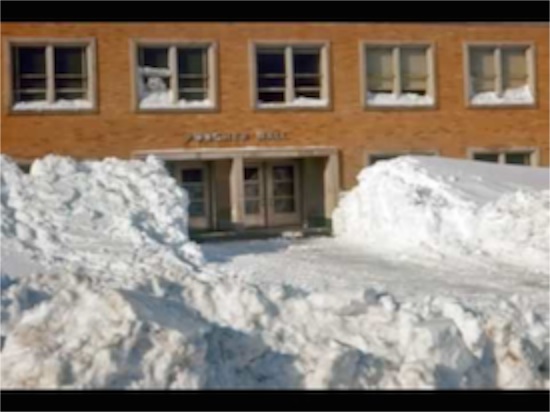
There is a kind of pride that develops in having survived the extreme weather. At least in the coffee shops, bragging rights are reserved for those who have stuck around long enough to have a few weather stories to tell. Perhaps we’ll be telling future generations about the floods of ’11 or the drought of ’12. We complain while we are enduring the challenges of our times, but afterwards, we are grateful to have survived. To endure in the face of hardship is an achievement.
Sure, it is hot and it is dry. And we are still here. The garden may not be much and the grass in the lawn has gone dormant, but we’re surviving. The human spirit is not easily dominated. We seem to have what it takes to hang in for the long haul.
It is simply the case that there are forces in this life that are greater than we are. Even with our sophisticated systems for weather prediction, we are still vulnerable to the effects of weather. And we do not control the weather.
So we complain – at lest a little.

And the weather gives us a topic for conversation today and stories to tell in the future. Still, it would be nice to have a little rain. We watch the clouds build up in the afternoon and know we’d be happy with a thundershower. We sniff the breeze and feel the heat and long for a cool, refreshing shower. If only it would rain.
When the rains do come, we’ll have a new topic for our conversation and we can complain about the inconvenience rain causes. Regardless of the weather, we’re practiced at complaining.
Copyright © 2012 by Ted Huffman. I wrote this. If you want to copy it, please ask for permission. There is a contact me button at the bottom of this page. If you want to share my blog a friend, please direct your friend to my web site.
How far can they go?
I went to Kansas City on a Friday
By Saturday I learned a thing or two
But up 'till then I didn't have an idea
Of what the mod'rn world was comin' to.
I counted twenty gas buggies goin' by theirselves
Almost every time I took a walk
An' then I put my ear to a bell telephone
An' a strange woman started into talk.
What next! What next?
Everything's up to date in Kansas City
They gone about as fer as they can go
They went an' built a skyscraper seven stories high
About as high as a buildin' orta grow.
Everything's like a dream in Kansas City
It's better than a magic lantern show.
You can turn the radiator on whenever you want some heat
With every kind of comfort every house is all complete.
You could walk the privees in the rain and never wet your feet!
They've gone about as fer as they can go.
They've gone about as fer as they can go!
The Rodgers and Hammerstein musical is a classic and the songs are easy to remember. But the setting is from decades ago and Kansas City has changed. It continues to be enough to amaze a yokel from the country like me.
I remember being impressed with Macy’s Department Store when our family visited New York City in the late 1960’s. To have so much merchandise available in a single building was something that I had never before experienced. We spent a day walking around the store looking at all of the various departments. I don’t remember that we bought much – the visit was more impressive for just seeing the store. We did eat lunch in a restaurant that was located inside of the store.
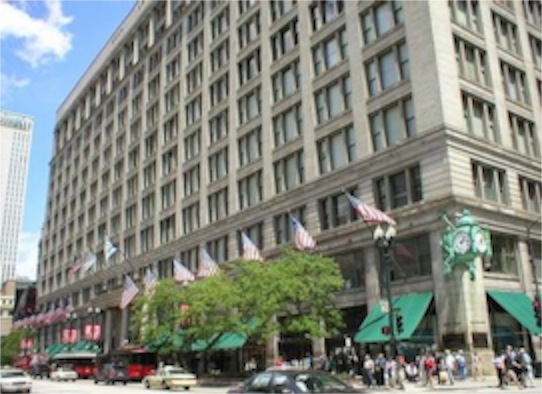
These days things have changed. There are Wal-Mart stores in lots of places each trying to become a one-stop shopping center for the region. There are online retailers like Amazon.com where it seems that you could order anything you might need. Gone are the Montgomery Wards and Sears Catalogues that we used to pour over. They’ve been replaced by one-click shopping.

But I was impressed yesterday afternoon when we stopped by the Kansas City Bass Pro Shop’s Outdoor World. That store doesn’t sell everything. Their specialty is sporting goods and they have a definite hunting and fishing theme. But “they’ve gone about as far as they can go” with the development of that gigantic retail space.
The store is situated on a hillside above a large pond. You enter from the upper level parking lot through a massive antler archway. Before you even get into the store, there are more boats and atvs on display in the parking lot than any place I had before visited.
Inside the store, there are gigantic displays of mounted deer, elk, wolves, bear, antelope, boars, and fish –yes they’ve got a lot of fish. There is a huge waterfall and tanks that made the word “aquarium” seem inadequate. I could have stayed and watched the fish in the huge tank for a long time. There is display space for a half dozen large pontoon boats and thirty or more fishing boats as well as a fleet of 4 x 4 and side by side atvs. The store has an entire section devoted to raingear and another to outdoor cooking. They have more smokers and grills and outdoor fireplaces than I’ve ever seen in one place.
I think I wandered around the store with my jaw dropping. One ought to remember to close one’s mouth so that you don’t look like a tourist. But that’s what I was – a tourist. We did end up buying a present for our daughter, a cookbook for me, and a small piece of bunker carpet for our trailer. But the visit wasn’t about shopping, really – or at least it wasn’t about buying. We were simply visiting a store that was so amazing that it was worth seeing. Now I can say I’ve been there.

I’m with Will Parker:
But up 'till then I didn't have an idea
Of what the mod'rn world was comin' to.
It hasn’t been that long since the Cabella’s store in Mitchell, South Dakota amazed me. I think that I might be pretty easy to amaze. I keep thinking,
They've gone about as fer as they can go.
They've gone about as fer as they can go!
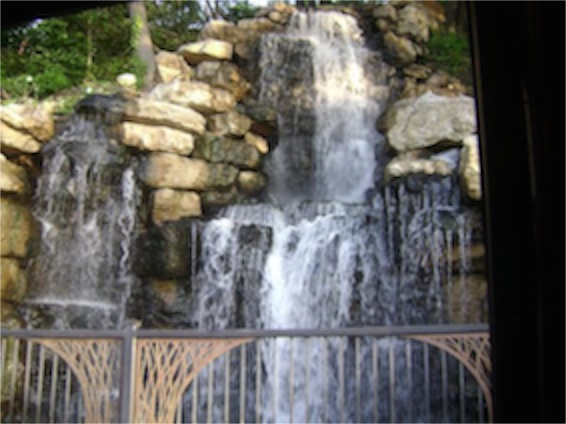
I wonder if here are hunting and fishing enthusiasts in the Kansas City area who never actually go outdoors except to walk across the parking lot. You can practice your casting in the indoor ponds and take aim at the indoor shooting gallery. You can sit in the latest luxury boats without the rocking of water and the challenge of weather. It was really hot outdoors yesterday, but comfortable inside the gigantic air-conditioned building.
Chances are, however, that they really haven’t gone as far as they can go. I expect to be amazed by something even bigger one day. For now, I can just say I’m glad I got to see the place.
Copyright © 2012 by Ted Huffman. I wrote this. If you want to copy it, please ask for permission. There is a contact me button at the bottom of this page. If you want to share my blog a friend, please direct your friend to my web site.
A Time of Extremes
Folks around here can’t remember a time when the weather was like this. That seems to be true in many places. The weather seems to be setting new records of extremes in many places in the past few years. It is hard to remember that just a year ago the entire Missouri River Basin was facing record high water and flooding. Right now a little more water would be nice, but this year’s extremes are different from those of a year ago.

We seem to be living in a time of extremes.

We seem to be living in a time of extremes.
And the extremes are not limited to natural phenomena. Some of the extremes are of human origin.
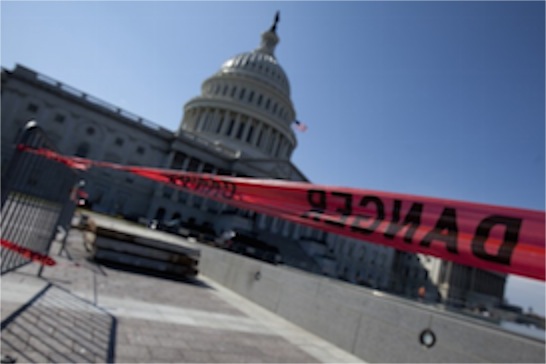
We seem to be living in a time of extremes and some of those extremes are human behavior.
I could go on and on. The amount of money being spent on the current presidential election is extreme. The amount of time of time Representatives and Senators spend raising money is extreme. The vitriol spewed by hate radio is extreme. The lack of objectivity in news reporting is extreme.
The extremes in weather seem mild by comparison with the extremes that are created by human decisions and actions.
Actually the extremes of weather may also be the result of our decisions – at least some of the effects of them are. The high loss of homes in the wildfires this year is the direct result of too many of us wanting to have our homes tucked into the woods instead of gathered together in safer locations. It seems that everyone who can afford it is wanting their own piece of the forest to build a home. I can’t criticize others. We love living on the edge of the forest in the hills. We love the trees in our own yard. Although we’ve worked to maintain green space and don’t have trees too close to the house, my own behavior hasn’t been all that much different from those who lost their homes to the recent fires. It could happen to us and we know it. Decisions about where to build a house can have dramatic consequences.
The same is true of the many deaths to avalanches. It is partly due to the fact that there have been a lot of avalanches in the mountains this year. It is partly due to the fact that there are more people attempting extreme mountain climbs. Mountain experts are reporting that more and more people are heading into the mountains with less equipment and less preparation than was the case a decade ago. Dangerous environments are not kind to those who are not well-prepared.

We have no need of extremes. There are plenty of others who are going to extremes. We seem to live in a world of extremes.
Copyright © 2012 by Ted Huffman. I wrote this. If you want to copy it, please ask for permission. There is a contact me button at the bottom of this page. If you want to share my blog a friend, please direct your friend to my web site.
Journey toward freedom
In essence the rule are all part of a simple formula. “The exodus of the people of Israel from slavery to Egypt to freedom establishes God’s authority in matters of human freedom. People, however, tend to relinquish their freedom. They make choices that make them less free. God offers ten simple commandments that, when observed, increase the freedom of all people.
The first one is the toughest and the others can be interpreted in the light of that first commandment. “There is only one God. Put God first.” It sounds simple enough, but humans have a tendency to put all sorts of other things first: success, money, recreation. . . . The list goes on and on.
Two and three follow naturally. “Don’t make any other gods, ” and “Use the name of God with care.” Every time we think that there are things in life more important than God, we end up treating those things as if they were gods. People rally around the god of sports and the god of their own images. One way to find out what is most important to people is to follow the money. People establish priorities for the use of their money. The thing they spend the most money on tends to be the most important thing for them.
The third commandment is often trivialized to “Don’t curse.” If it were only that simple! The truth is that people use the name of God to justify all sorts of irrational and destructive behavior. I’ve heard people claim that their possessions were the result of their own work rather than the blessings of God. To do so is to put themselves in God’s position.
Which brings me to the point of today’s blog. I think that some of the worst offenders when it comes to the 4th commandment, the one about honoring the Sabbath, are pastors. We tend to try to trivialize that into “attend the church where I preach.” We think that because we work in church buildings we somehow are immune from the simple mandate to take time to rest and renew. The commandment is quite clear. Even God rests. Those who think they do not need rest are putting themselves above God. Remember that first commandment? God really does understand human freedom.
I know that I am making this sound simpler than it is, but it is a difficult topic for most pastors and for me personally. I have trouble taking a day off. Vacation is a challenge for me. I keep thinking about all of the things that will go wrong at the church. I tend to be slow to disconnect. This current vacation is a good example. I try to take Monday’s off. They are supposed to be my time of Sabbath rest. Of course, like others, I usually spend Monday’s working as hard as I can to catch up on personal work, chores around the house, and other activities. I keep thinking, “If I don’t do it, it won’t get done. This week I simply worked on Monday. I got up at my usual time and went into the office. I met with a family to plan a funeral. I caught up on paper work. I made phone calls.
My vacation was supposed to start on Wednesday, but I delayed for a day because the best time for the funeral was Thursday morning. I convinced myself that I needed to officiate at that funeral and so delayed the start of my vacation.
I could go on and on with my justifications for my behavior, but there is an obvious case of idolatry in what I have done. I have convinced myself that the church couldn’t run without me. I have behaved as if I thought that I am in charge of providing leadership in place of God. It is a failure of trust at its core. God has called me to serve a particular congregation. I do my best to do so. But it is not true now and it has never been true that I am the only person who can serve that congregation. God has raised up other ministers for that congregation. God continues to call others to ministry. It doesn’t all hinge on what I do or do not accomplish.
The myth that everything will fall apart when I am gone is a failure of leadership on my part. Free people need leaders, to be sure. But free people follow God who will provide the leaders that they need. When people think that a particular leader is the only one they can follow, they are at risk of losing their freedom.
While it is true that a pastor who can’t take a vacation without worrying about the congregation is never free, it is also true that the congregation served by that pastor also loses its freedom when the system hinges on a single individual.
Yesterday, I worked side by side with my son-in-law on a project to improve the deck on their house. It was hot and we were carrying blocks and beams. I went to bed tired. But it was good tired. It was free tired. Sabbath for a minister may not mean staying away from anything that others call work. Physical labor can be a way to free one’s mind and take a Sabbath from the usual. It is entirely possible that what others see as work is essential to my recreation.
This vacation is a bit of an experiment for me. I’m still working on being faithful to those commandments. Perhaps the best thing I can do as a pastor is to be honest with my congregation that I struggle, too.
We’re all on the road to freedom – and the destination remains before us.
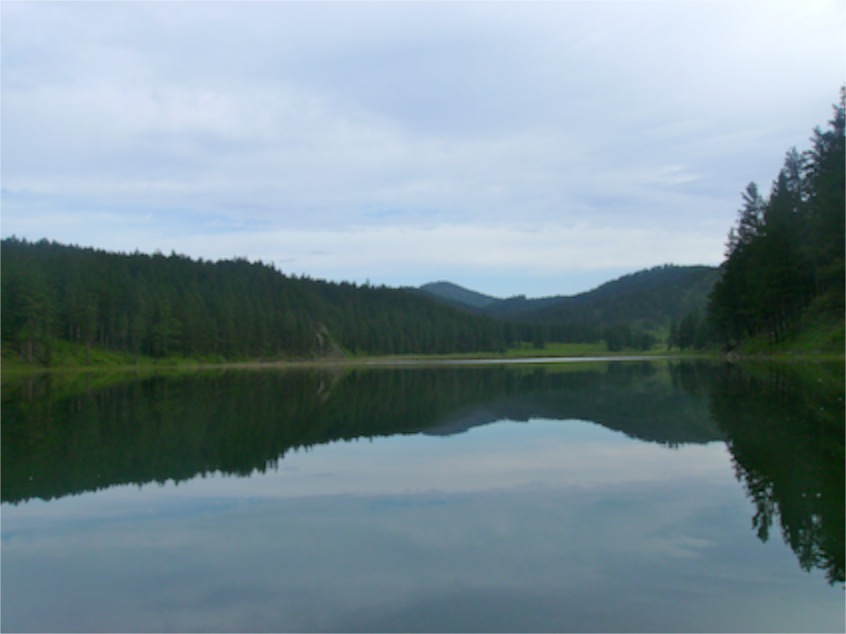
I started the day yesterday with an early morning paddle on a tiny lake in Iowa - a good place to find Sabbath freedom.
Copyright © 2012 by Ted Huffman. I wrote this. If you want to copy it, please ask for permission. There is a contact me button at the bottom of this page. If you want to share my blog a friend, please direct your friend to my web site.
Making Hay
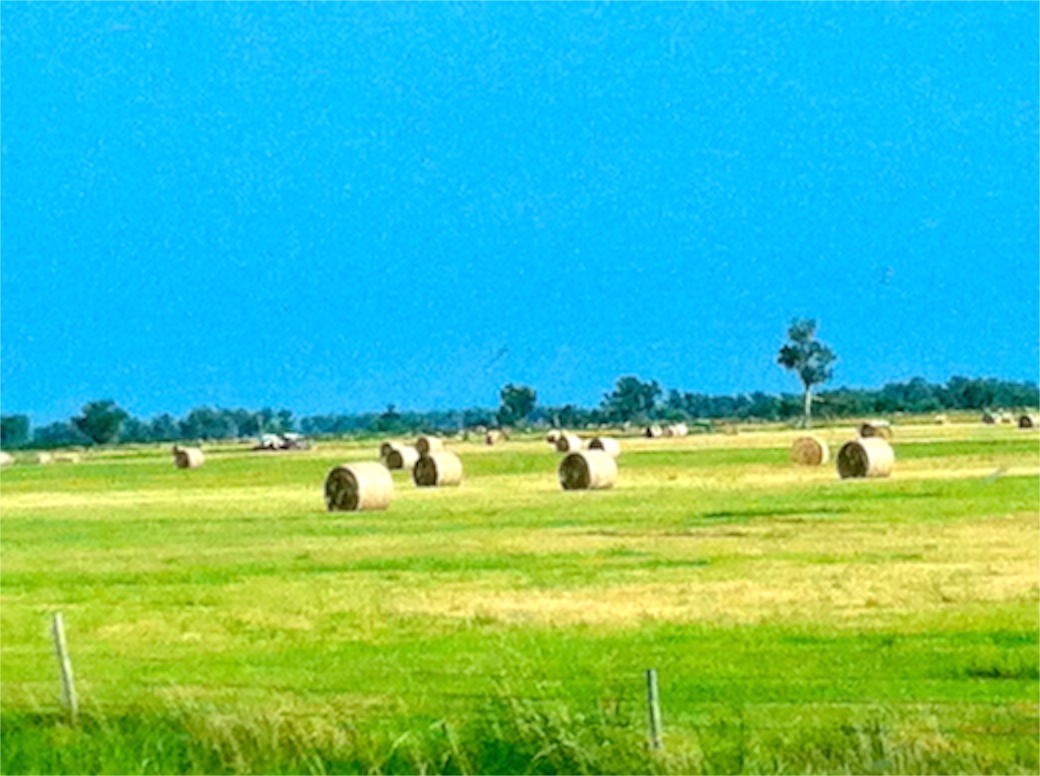
OK that statement needs an explanation for some of the regular readers of this blog. We left on vacation yesterday. We had a funeral in the morning and after the graveside committal, we went home, changed our clothes and got in our truck. We’re on our way to Warrensburg, MO, where we will visit our daughter and son-in-law. They’ve got some home improvement projects that are just the ticket for ministers on vacation. Repairing and refinishing a deck and painting are very different from our usual line of employment and as much as they wouldn’t seem like vacation to a carpenter or painter or home handyman, they are great projects for ministers who enjoy working with things that don’t talk from time to time.
But a further explanation is also in order. Vacation for me means leaving the Interstate behind. When we travel with our camper, 65 mph is just about the right speed, so we don’t gain any time by sticking to the Interstates. And I am interested in following different roads and seeing different sights. So our route to the campground in Onawa, Iowa, where we slept last night took us down to Valentine, Nebraska and across Northern Nebraska on Highway 20 through Norfolk and then on a smaller road to Decatur where we crossed the Missouri into Iowa. It is my kind of a drive.
So we had an opportunity to check out the crops in Northeast Nebraska. In that part of the world they grow corn, soybeans, alfalfa, corn, soybeans and a little corn and soybeans to round out the crops. Oh, and they grow alfalfa for hay. And this is a good year for hay in this part of the world. They’re putting up their second cutting here and prospects look good for a third cutting. The round bales are thick in the fields. We saw one field where they had four round balers working at the same time.
That is a stark contrast to the part of the world where we live. It takes water to grow good alfalfa. And water is in short supply in our neck of the woods. It is also in short supply for the folks in Montana and North Dakota, or so I hear. I have a friend in Montana who is talking about selling cattle early this year. There are fields where he won’t even get one cutting this year. It is better to just pasture cattle there and save the cost of fuel that it would take to harvest such a poor crop.
But they’re making hay in Nebraska.
This part of the world, where Nebraska and South Dakota and Iowa meet is a place where there are a lot of cattle get fed. A whole lot of the corn that we saw growing in the fields as we drove is chopped directly as cattle feed. They don’t bother to combine it, but rather use specialized harvesters that chop the entire plant in the field. Producing beef and pork for people to eat is a big part of the agricultural economy here. And what they do is different from the way ranching is done where I grew up and where I live now.
In the Western part of South Dakota and in much of Wyoming and Montana, the main crop is grass. Sure there is wheat and barley and alfalfa grown, but those are really variations on the same crop. The climate and the soils aren’t well suited for growing protein crops like soy and other bean crops. The way our land produces protein is by producing the food that critters with multiple stomachs eat. For centuries, the way humans got a balanced meal from the land was to hunt buffalo, with a little bit of deer, antelope and elk thrown in on occasion. Since the dawn of the 20th century, cattle have replaced the buffalo for the most part with a little bit of sheep thrown in.
Here, farther to the east, the soils are a bit richer, water is more abundant, and other crops can be grown. Even though the great buffalo herds once roamed this area as well, the land can be used to produce a wider variety of crops. Out here corn is king. It is grown to fatten cattle and push the production of meat to the market in a shorter amount of time. It is grown to produce sweeteners for a whole host of manufactured foods. It is grown and distilled into alcohol to fuel our vehicles. And growing all of that corn is chemically intensive. It takes a lot of different chemicals to keep from depleting the soil with such intense farming. Fertilizers are used to boost production. Insecticides are used to decrease pests. A farmer in these parts needs to be fairly skilled in chemistry as well as agribusiness. And they have to be prepared to work in a world of very expensive equipment and high production costs.
The hay we saw growing in the fields is not primarily grown to feed the cattle owned by the same rancher who is producing the hay. It is grown to be sold as a cash crop to feedlots that finish cattle for market. Agribusiness in this region is a series of specialized enterprises that participate in a network of buying and selling to produce food for the market. That’s different from a rancher who raises calves from birth to slaughter. It’s very different from the way agriculture worked in this region a century ago.
Today we’ll shift gears a bit more. By noon we’ll be in a place with even higher humidity and different crops. Central Missouri has its own agricultural climate and way of doing business. Part of the fun of travel is seeing different ways that people live and earn their living. Part of taking a vacation from our usual mode of life is to once again be reminded that we way we do things isn’t the only way that they are done. I’ll be blogging more on that topic in days to come.
For regular readers of the blog, please note that for the next two weeks, the time of day that I publish the blog will vary. I intend to write each day, but I’m going to mix it up and not always write first thing in the morning. I apologize for any inconvenience this may make. If you get up and there is no blog one day, check it again the next day and I’ll probably have posted something. Thanks for reading.
Copyright © 2012 by Ted Huffman. I wrote this. If you want to copy it, please ask for permission. There is a contact me button at the bottom of this page. If you want to share my blog a friend, please direct your friend to my web site.
Growth


Our current home is somewhere in between those two extremes. Rapid City is growing in population. It is not as large, nor is it growing as quickly as South Dakota’s other urban center, Sioux Falls, but it clearly is growing. We notice the growth in the number of new homes that have been built in our neighborhood. We notice it in the number of cars that share the road to town. We notice it in some short-term traffic snarls, although we acknowledge that our traffic problems are minor in comparison to what occurs in larger urban areas. We notice the increase in population with the number of new businesses that are added to our community.
It doesn’t take a very complex examination of the statistics to see that our world is becoming more urban and less rural with each passing year. We humans, it seems, like to congregate in cities.
I don’t understand all of the dynamics in this process. Being a small-town sort of person, I find rural areas more attractive than places that are crowded. I like to spread out a bit. I like to visit large cities and then come home to a place where the deer walk through my yard and my neighbors are a little bit farther away. Lately I have begun to realize that the luxury of space is one that I enjoy, but that is not an option for many of the world’s people. People move to get jobs. They move to find services for their children.
I have had the luxury of choice in the moves that we have made. We have moved in response to our understanding of God’s call and the needs of the church to be sure, but we have also considered our own wants in our decisions about moving. There are a lot of people in this world who don’t feel like they have any control over where they will live.
I’ve been monitoring the news from Dadaab, a refugee camp in Kenya near the Somali border. Even though the camp consists of temporary structures and tents for the most part, it has become an enormous city with all kinds of infrastructure problems. Dadaab began receiving refugees over 20 years ago when the government of Somalia failed. The country has not had a functional government since 1991. Dadaab is now home to nearly 500,000 people. Its population has grown by almost a third this year alone. According to aid agencies there is an immediate need for 30.000 new temporary shelters to house the people who are already in the camp. Funding for about 4,000 new shelters has been secured, but the need is growing faster than the available funds.
Eight organizations, including Oxfam, CARE, and Save the Children say that they are facing a $25 million shortfall in funds to operate the camp. Lives are at risk as the agencies struggle to provide basic water and sanitation in the grossly overcrowded camp. The growth of the camp is out of control and long-term solutions are needed, but there is no denying that there are a lot of people and more are coming every day. A half million people constitutes a city, even if it is only a collection of shacks and tents on the bare ground in a desert region.
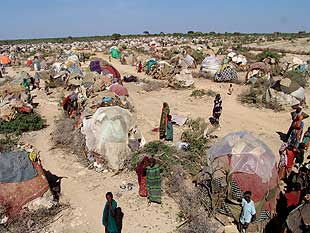
For all of my life, scholars have been studying the effects of population on this planet. There is much discussion about the capacity of the planet to support continuing human population growth. The estimates of how many people the planet can sustain vary, but scholars agree that population trends are leading us to the breaking point. Unending growth cannot be sustained. But we cannot agree on how to slow or control the growth. It seems as if the people of this world are heading toward some kind of disaster without the ability to change our course.
If I were to end this morning’s blog on this note, it would seem that we are in dire straits and there is little hope for this world. I haven’t described the sounds of children playing or of teens dancing that come from Dadaab. I haven’t written about the joy of life that goes on in the midst of what we think is the most grim of situations. Unsustainable as it is, Dadaab is also a place of the triumph of the human spirit. In the midst of devastating poverty and deep need, people smile and fall in love and imagine a future. We continue to search for solutions even when the problems are bigger than us.
I don’t read about Dadaab because I want to become depressed, but rather because I believe that my life and the lives of those in the camp are connected. We’re all in this together and whether we live in cities or in isolated locations what we do has an impact on others.
And when we work together, our capacity to come up with solutions is unlimited.
Copyright © 2012 by Ted Huffman. I wrote this. If you want to copy it, please ask for permission. There is a contact me button at the bottom of this page. If you want to share my blog a friend, please direct your friend to my web site.
Running Bulls and Pushing Bull
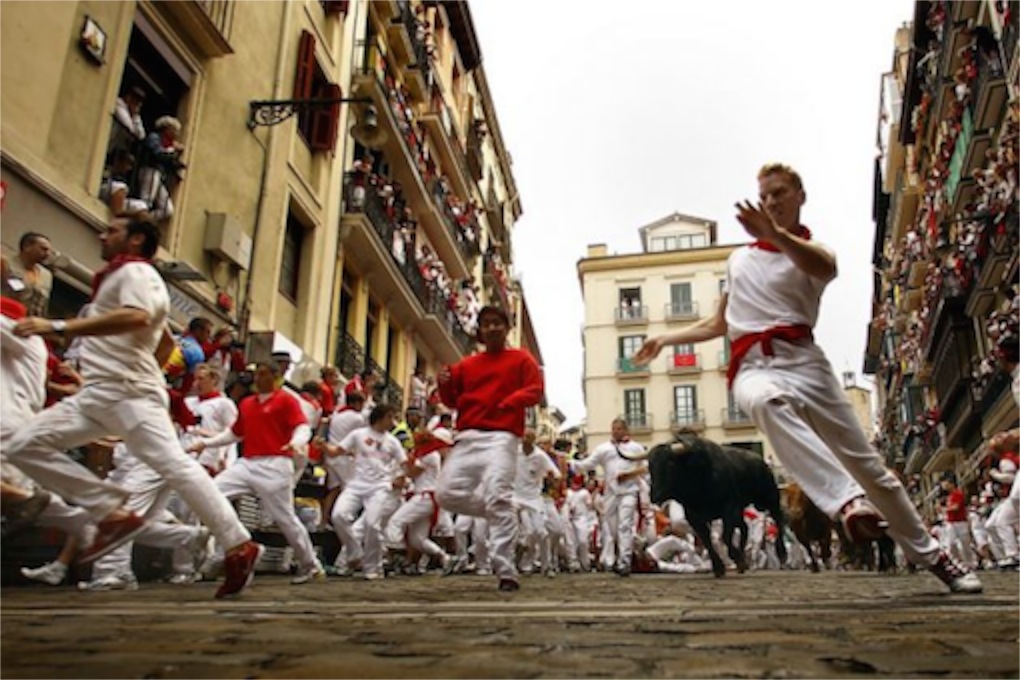
They’re running the bulls at the San Fermin fiestas in Pamplona in northern Spain. Yesterday was the fourth running. Beginning on July 6, each year, the Fiesta San Fermin goes on for nine days of hectic eating, drinking, and bull running. It still happens pretty much the way Ernest Hemingway described the fiesta in The Sun Also Rises. Papa left his mark on the city. There is even a street named Paseo Hemingway. But the big impact of Hemingway is the way that the tourists flock to the city each year. Pamplona is a beautiful small city, more cosmopolitan than in Hemingway’s time, but retaining the historic Navarra and northern Spanish culture. There is a 14th-century Gothic cathedral not far from the Plaza del Toros.
In the book, Hemingway refers to a hotel called La Montoya on one corner of the Plaza del Castillo. In real life, the hotel is the Gran Hotel La Peria. The regular rate for a room is over $600. Rates are higher during the Fiesta, of course.
I imagine that the hotel is not filled with writers and artists this year. With the depressed economy, especially in Europe, it is likely that artists don’t have the extra cash to eat at the outdoor tables at the Café Iruna. They run the bulls around 8 a.m. The actual bullfights are in the evening, starting at 6:30 or so. During the rest of the day, celebrants have plenty of time to indulge their appetites at many restaurants, bars and other hangouts. That’s what Hemingway did. He was a man of robust appetites. When he traveled, he immersed himself in the culture of the place that he visited. He wrote, “If a man is making up a story it will be true in proportion to the amount of knowledge of the life that he has and how conscientious he is.”

This year, however, I imagine there is one real difference. The bars and hotels and restaurants are, I suspect, filled with vulture capitalists. Spanish and Italian bonds have rallied in the wake of the deal that was struck to shore up Spanish banks, but there is wide speculation that the banks will be forced to liquidate some of their toxic assets, primarily real estate repossessed in mortgages gone bad. No one knows for sure what the rules and regulations will be as the details of the deal are still sketchy, but the really big profits will come to the speculators who get in on the deal early. Banks are likely to sell some assets in anticipation of the rules that will be coming. Land is rumored to be selling at an 80% discount, homes at 30% - 40% below where the market is expected to be when recovery takes place. You can bet there are some deals being worked out in the bars and restaurants and the bulls run by on the streets outside. After all it is the venture capitalists who have the money to drop on the expensive venues.
Maybe, if I had the opportunity, I would visit Pamplona in the off-season. Not only would the prices be lower, but the culture might be more authentic to what Hemingway experienced. I’m not that big a fan of bull fighting in the first place. And I certainly don’t run in the same circles as the vulture capitalists.

And I did spring for the restored edition of A Moveable Feast that includes text that was not in the original version. I decided that this was reasonable, since the book was unfinished at the time of Hemingway’s death and perhaps grandson Sean and son Patrick would have some insight as to how the old man might have finished the book.
But I have no desire to read all of his unpublished writings. There is a reason why some things are not published. Literature is the product of writing and editing and re-writing. Publication is a lengthy process with many discarded words along the way. The Old Man and the Sea is a powerful book in part because of what it doesn’t say. It has been refined and cut until all that remains is the essential.
I think Scribners has it all wrong publishing the semi-autobiographical novel A Farewell to Arms including all of Hemingway’s notes and possible variations. The news release claims that there are 47 alternate endings to the novel in the Scribners edition. Granted, it does have a personal introduction by Patrick and another by Sean. But I don’t think I want to see all of the discarded notes. A Farewell to Arms isn’t my favorite of Hemingway’s books in the first place, but at least what I got to read in my copy is the product of the complete process: writing, re-writing, editing, choosing, discarding and refining.

And, who knows, I might be able to make money on that edition if I found the right vulture capitalist planning a trip to Spain to watch the bulls run. I’m told it isn’t too early to book rooms for next year. I think I’ll ask $50.
Copyright © 2012 by Ted Huffman. I wrote this. If you want to copy it, please ask for permission. There is a contact me button at the bottom of this page. If you want to share my blog a friend, please direct your friend to my web site.
Moving away from print
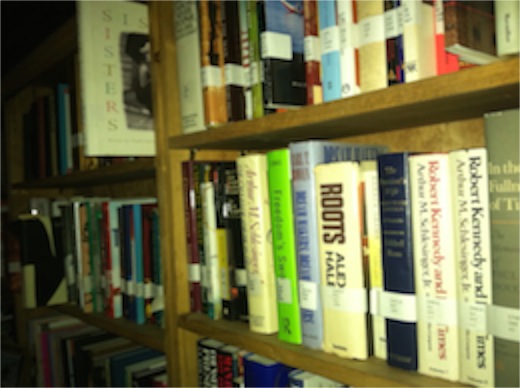
Yesterday we received a catalogue of print resources that are available for Christian education. The catalogue is well done and has informative promotions for the various resources. I immediately sat down and paged through the catalogue. I am familiar with most of the resources that the catalogue is promoting and so there wasn’t much that was new. My reaction after paging through it surprised me, however. The catalogue advertises the products of a traditional press. This press has been in business for hundreds of years and its people think in terms of traditional printing. They have a central distribution warehouse, keep an inventory on hand, and are prepared to ship books to churches and individuals. They know printing and the distribution of printed resources. My reaction was not to the printed resources, but rather that the beautiful catalogue is probably the last of its kind. As I said, they know printed resources, but they don’t seem to know the Internet. The catalogue presents an advertisement for an online resource. The resource is high quality and looks appealing in the catalogue. The web site, however, is a disaster. The product isn’t selling well because the press doesn’t know how to make the web site work. The product is difficult to find on the web. The promotional web site has no samples. The actual distribution web site has broken links and really is just distributing print resources in downloadable .pdf format.
The press is going broke.
Like me, they are thinking in terms of books and print in a world where there are lots of flashy Internet resources.
The Internet doesn’t work like a book. With a book, the press has a product, sets a price and sells the product. Money is exchanged in direct relationship to the goods received. The Internet is powered by advertising. The product is often delivered without charge, except that it links to advertisements for other products to purchase. Amazon.com is a site that sells traditional books, but you can’t visit it without seeing a page full of recommendations for other books, merchandise, and other products. The process of purchasing is so easy that additional purchases are just a click away. The company gets the Internet and knows how to use the Internet to produce revenue. It looks easy, but it isn’t.
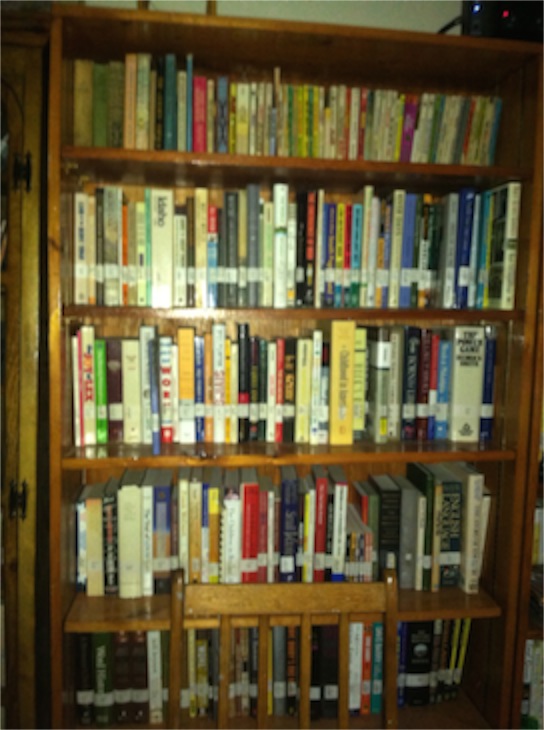
I don’t have to go farther than my morning newspaper to be reminded that there is decline in print media. The newspaper is produced by a staff that is less than half the size of the team that produced the paper a decade ago. The product itself is of lower quality. Headlines and articles don’t match up. There are multiple errors on each page. The art of editing has been reduced to page layout – adjusting the number of words to fit the available space. Proofreading has been assigned to a computer. And the content is predictable and boring. I frequently wonder how much longer I am going to continue to spend money each month to have a newspaper delivered to my home.
I don’t read the newspaper for news any more. I have already read the news online. I still read the comics in the newspaper, though I know I can also read those online. In fact, I do read some comics online because I like a few that aren’t printed in our paper.
I just like the feel of a newspaper at the breakfast table. I don’t take my computer to the table, yet. I know plenty of people who do. And the best tablet computer available costs less than three years’ newspaper subscription. And there is the problem of the huge amount of waste that a traditional newspaper generates. Essentially, we throw the entire paper away every day. Of course, we carefully save our old newspapers for recycling and I take them to a collection box because I am uncertain of the consistency of our curbside recycling. But even so, they are simply composted in our community. The cost of shipping makes paper recycling too expensive for our area. It is wasteful for me to consume so much paper every day.
I know the world is changing. I know that new generations will have fewer and fewer printed resources. But I have no fear of running out of books in my lifetime. I have my rooms full of books that are my old friends. I will not live long enough to re-read all of the books I currently own. And I still have “one click” purchasing at Amazon.com. New books arrive from time to time. In fact, there is one that will be delivered today.
There is excitement in being at the cutting edge of technology. But there is great comfort in being an old coot with his room full of books. These days I’m threading the balance between excitement and comfort differently that I did when I was younger.
And there is a bit of me that enjoys the reactions of young people who ask, “What do you do with all of these books?”
Copyright © 2012 by Ted Huffman. I wrote this. If you want to copy it, please ask for permission. There is a contact me button at the bottom of this page. If you want to share my blog a friend, please direct your friend to my web site.
Hospital Vigils

But the real hard part of having a loved one in the hospital is that you are already frightened by the health condition of the one you love. It is serious, otherwise you wouldn’t be dealing with the hospital. You feel vulnerable because you know that you need help. You are not able to provide care for your loved one alone.
One of the roles I assume when I walk through such experiences with families is that of a calm voice that can answer questions and explain what is going on. Because human bodies are complex and treatments have varying success rates and timing is not always consistent there are a lot of questions that I cannot answer including the most critical one: “Is he/she going to be all right?”
There have been a few times when I have been on the other side of the equation. Fortunately hospitalizations have been infrequent in our family. But there have been enough to know that my emotions can get pretty frayed.
I have been thinking about the process lately because in addition to the usual routines of my work, I am keeping track of two medical situations that involve friends and family in other parts of the world.

As the days pass, however, a bit of the reality of the rest of our lives begins to sink in and we develop some shorthand about our communications to allow the family to spend more time at the hospital and less time on the phone communicating the news. E-mail is a great assistant in this phase of the process. We know there is a long road of recovery ahead and we don’t know what, if any, permanent disability will remain.
What is most amazing is the sense of being part of a world-wide prayer vigil. Because of the many time zones in which we have common friends, we know that prayers are literally being offered at every hour of the day and night. Because of the wide diversity of the people who love and care for this family, we know that there are many different understandings of God and many different theologies about the nature of prayer. Somehow these differences don’t matter. We know that we are not telling God what to do. We know that we do not control the outcomes by our prayers. But we also know that we are not alone and that the family is supported by a world-wide network as they travel this journey.

In all of these things we are more than witnesses. We are participants, even if we are miles away. In seminary we spoke of the transcendent power of love as a theoretical concept. In life it is a reality. Love is bigger than the physical distances that divide us. We do not have to be in the same room to share the same vigil. We can share worries and fears over long distances. We can witness the amazing power of healing while occupying different continents. We are connected.
And, at times like these, those connections are more valuable than the power of words to express.
Copyright © 2012 by Ted Huffman. I wrote this. If you want to copy it, please ask for permission. There is a contact me button at the bottom of this page. If you want to share my blog a friend, please direct your friend to my web site.
Exercise

We had a number of different pets when we were growing up. We had dogs and cats. One distinction in our town is that we had donkeys. Our father raised Spanish Burros as a hobby. Then there were the smaller and sometimes more exotic pets such as a turtle that mostly hid under the sofa. We had goldfish on numerous occasions with varying degrees of success. There was a parade of other creatures as well. I remember the hamsters. We never had one of the modular habitats that are now available. We had a cage, with wood chips on the bottom, a water bottle that attached to the side, a small dish for food pellets and an exercise wheel. The hamsters slept quite a bit and they burrowed into the wood chips to sleep, so there were times when observing them wasn’t much fun. The one entertaining thing that the hamsters did was to run in the wheel. I don’t know how much hamsters run in their natural environment, but I suspect quite a bit. They are small mammals and there are plenty of predators for such creatures. Hamsters can easily outrun a snake, though they probably are too slow for an eagle and only have occasional success getting away from a coyote. I haven’t observed any of this. I’m just speculating based on the hamsters we had in a cage.
I think about those hamsters from time to time. They didn’t have very rich or meaningful lives. The food and water were regular. And they had us to keep track of the housecleaning. But their social contacts were severely limited. They had each other. I don’t know what hamsters think or what would make one happy, but I suspect that living in a cage isn’t all that much fun.
All of this is a convoluted way of saying that I don’t understand one of the popular elements of contemporary culture. Just down the street from our house is an athletic club. There are plenty of them spread all around town. Some of them are in strip mall storefronts with glass windows that enable passers by to look at the people working out inside. Some of the athletic clubs have specialized equipment for weight lifting and strength training. Virtually all of them have rows and rows of machines for exercising.

I’m just baffled by all of those machines.
This morning I have a little bit of stiffness in my shoulders. I spent an hour yesterday rowing my boat on Sheridan Lake. The lake was busy and there were lots of other boaters having fun. The activities of the motorboats made for plenty of wakes and the water was choppy along the edges of the lake where I rowed. A couple of times my boat was riding a swell and I didn’t dip an oar deep enough. Expecting the resistance of the water makes for an interesting ride when all that the oar gets is air. Still, it was good to be outdoors and I enjoyed myself. I took a look at the scars from the recent fire and was pleased to find that most of the trees are going to survive. The mosaic left by the fire will be noticeable for a few years, but we’ll be noticing new growth by next spring.
Rowing is good exercise for someone like me. I use my arms and legs and bend at the waist, where my fat tends to congregate if I don’t stir it up from time to time. Even the process of launching the boat involves lifting and bending. And I like the view from the surface of the lake. The hills have a lot of reservoirs on which to paddle. I go to Sheridan Lake often because it is close, but there are enough choices that I would never get bored with the scenery.
Rowing I understand. A rowing machine, however, is a bit of a mystery to me. Why would someone sit indoors in front of a television set pulling on a contraption that is specifically designed to go nowhere and provide resistance without motion? The effort is the same as rowing a boat, but there is no satisfaction of taking a trip around the lake. I like the feel of varnished spruce oars in my hands. I like the grace of watching the wake of my boat as it slices through the water. I like the eagles circling overhead and the fish jumping in the lake. I like watching the campers on the shore. I like the smell of the air. Most of all, I like getting some place when I row.
I’m that way with a bicycle, too. I enjoy riding my bike on the greenbelt in Rapid City. I can go from one end of town to the other and back in a couple of hours. If I start down by the fairgrounds it is a gentle climb to Cleghorn Canyon beyond the fish hatchery. Then I turn around and go downhill all the way to the fairgrounds. Along the way I get a good view of rapid creek and the critters that like to hang out near it. I have the satisfaction of the changing scenery that comes with motion. I’ve got an odometer on my bicycle and I can see the miles add up. Five miles go by pretty quickly on a bicycle.
I sort of feel sorry for those people who sit on the bicycles in the health clubs. I have looked in while walking by the club in Baken Park. The people are sweating and working hard. But they are getting nowhere. It reminds me of the hamsters in their wheel. I wonder if they know the freedom of getting on a bicycle and going wherever you want to go. They don’t even get the rush of the wind in their ears. I don’t think they even get to choose which channel is blasting them from the television sets.
The same can be said for treadmills. Walking in the same place doesn’t seem like much fun compared with hiking through the woods. They have stair machines for those who don’t like to get up or down for their effort. We have regular stairs to go from our basement to our main floor and another set to go upstairs.
It is unlikely that I will ever again own a hamster. I think those creatures belong outside in their natural environment. And, for now, I have no intention of joining a health club. I think that I also belong outside.
Copyright © 2012 by Ted Huffman. I wrote this. If you want to copy it, please ask for permission. There is a contact me button at the bottom of this page. If you want to share my blog a friend, please direct your friend to my web site.
Fascinating Brains
After that time, my studies led me more into the arena of what we do with our brains. I continued to study psychology after completing my formal education and I added to those academic studies my work with people. In the church there are lots of opportunities to wonder about how people think. It is a community of people who are different from each other in the way that we think. We are bound by our commitment to the community, by our belief in God, and by our common practices. That does not make us all the same. One of the wonderful parts of the church is that it is an intentionally multi-generational community. That means that I get to observe babies and infants, young children and teens, young adults and seniors. And I get to see how they interact.
Actually, it is amazing that we get along as well as we do. The presence of disagreement and even conflict in the church should come as no surprise. The wonderful thing is that we are able to resolve most of the conflicts and we learn to live with the disagreements. I’m beginning to understand those dynamics better now than I did at the beginning of my career, but more on that later.
Because my studies were more practical than academic, I didn’t see many brain images as technology made it possible to show more and more of what is going on in our minds. I did get to study some of the early MRI images. Our son was included in a study of the angles of the human brain stem and had several MRI images taken when he was a child. Those images were, however, without color.
A few years ago I took a class from Dr. Jeb Shenck, a biology professor at the University of Wyoming. Because Dr. Schenck is both a researcher and a classroom teacher, he brought to our class some of the latest in brain images. The use of dyes and of computer-assisted coloring to make it easier to distinguish parts of the brain added greatly to our understanding.

They also revealed the incredible beauty of the human brain. The images were striking in their beauty. A little later I obtained a copy of Portraits of the Mind. This hardcover book follows the history of brain images from medieval sketches to state-of-the-art color enhanced medical images. The book fascinates me and I can spend hours and hours studying the pictures. Another book, Pictures of the Mind, illustrates how medical imaging has revealed that our brains are far different than we used to believe. When I was a graduate student, we learned that the brain was fully formed by adulthood and that it had very few regenerative powers. Scientists thought, at that time, that adulthood was a process of brain decline. New medical images reveal that the human brain is amazingly flexible, resilient and plastic.
That is good news. As a student, I thought that if a person was depressed, angry, sad, aggressive or nasty that person would probably remain that way for the rest of his or her life. In most cases, I thought, those tendencies would become more exaggerated. Things would inevitably get worse as the person aged.
Which returns us to the community of the church. If my initial understandings had been correct, work in a church would become more and more frustrating. Our congregations are aging. Even though we are multi-generational, the majority of our members are now seniors. If my initial understandings of the human mind had been accurate, I would be serving a congregation that got more and more quirky with each passing year while my own mind continued to deteriorate.
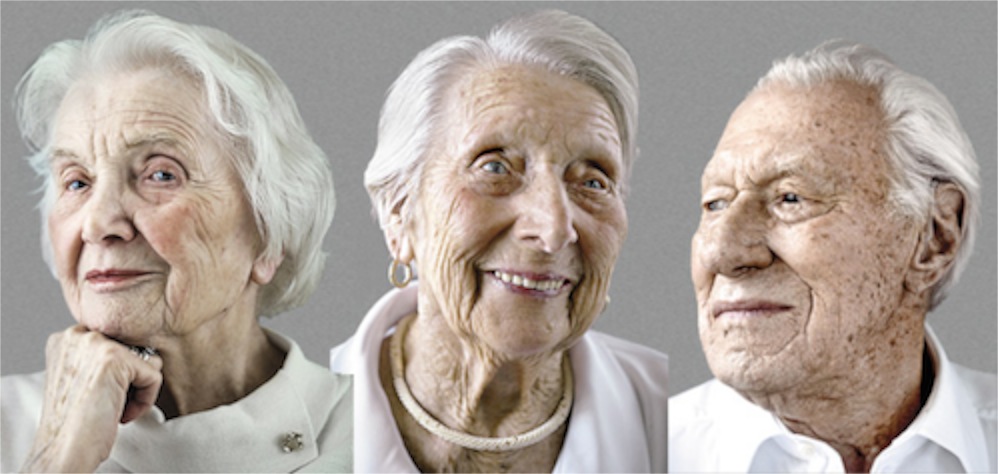
Fortunately, I was wrong in my initial understanding. In fact, there is significant evidence that rather than experiencing a process of continual decline, there are many ways in which our minds become better as we age. Maturity isn’t just a social construct designed to support elders as they age. It is a reality that offers great benefit to society.
Yes, certain mental skills do decline with age. Our short-term memory is no longer as accurate or accessible as it once was. However a recent University of Illinois study found that special orientation and juggling complex tasks improves with experience. That study focused on aging air traffic controllers and revealed that the older controllers were better at solving potential conflicts and avoiding dangerous near-miss situations.
In the church I have experienced that many people improve in their social skills as they age. They become more tolerant of different points of view. They are better at envisioning and suggesting compromises. They seem to have increased capacity to see the complexity of human dynamics rather than reducing conflict to “either-or” scenarios.
Additional research reveals that older adults become more skilled at managing emotions as well.
These discoveries are good news for me as I age.
That doesn’t mean that the church has less conflict simply because we are aging. We continue to be very complex. There are always power dynamics in churches. These sometimes are made more complex by other factors in the lives of our members. Some men experience insecurity and try to increase their sphere of influence at the point of retirement. They have been used to exercising a significant amount of power and all of sudden they have less. Some act out by trying to take more control in the church. Of course the church is a place with only a small amount of power, so power struggles in the church might not be as exciting as those in business or politics.
Pain is another significant factor in personality in aging people. When you are hurting, it is hard for you to be your best in relationships.
So I keep studying people and their brains. There is so much that is yet to be discovered. Jeffrey Eugenides provided a quote for the conclusion of today’s blog: “Biology gives you a brain. Life turns it into a mind.”
Copyright © 2012 by Ted Huffman. I wrote this. If you want to copy it, please ask for permission. There is a contact me button at the bottom of this page. If you want to share my blog a friend, please direct your friend to my web site.
A New Day

I was set for the triple play yesterday. After a couple of hours at the office, preparing the bulletin, completing some correspondence and catching up on some desk work, I headed to the donation center. After a brief screening, I was in the chair and hooked up to the machine. Part way through the donation, however, the machine began to alarm that my draw pressure was too low. A donor specialist noticed a small area a swelling near the needle site. The donation had to be halted before I had given enough to help anyone. It is one of the things that occasionally occurs to someone who has donated many times. The scar tissue in my elbow makes it more difficult to insert the needle. The phlebotomist is very careful to insert the needle into the vein working around the scar tissue. Sometimes it isn’t quite right and a very small amount of fluid leaks out around the vein.
It wasn’t anybody’s fault. It didn’t cause me any pain. I had a heat pack on my arm for a few minutes and I have a very small bruise there this morning. But the hour and a half I spent at the donor center didn’t benefit anyone. And it cost the center time and resources without any return.
It was just one of those days.
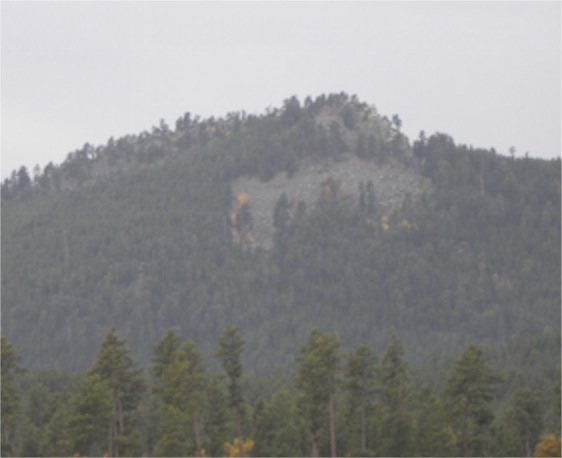
But I ended the day with a bad case of “should’ve, could’ve, would’ve.” As I headed home for a late supper I was feeling guilty and a bit frustrated at a day when I had the best of intentions, but the intentions just didn’t translate into much good for others. I know those days happen to everyone. I know that what I needed to do was to go home, go to bed and start fresh the next day. I know all of those things in my head. I was feeling guilty, however, about shifting responsibility for handling the crisis to another person. I don’t like to do that.
The evening was a blessing however. The dark clouds yielded rain on our dry land. I went to sleep with the sound of thunder in the distance, but nice rain falling outside my window. I don’t have an accurate rain gauge, but based on the water in the birdbath this morning, I’m guessing we got nearly a half-inch. That is a wonderful blessing. We can’t duplicate those results on the lawn and garden with our hoses.
There is a mist rising off of the moist ground this morning – actual fog in the hills. It is wonderful and the world smells fresh and clean after the rain. Despite the mistakes and failings of yesterday, we have been given a new day. There is a morning prayer that we used to sing at camp:
God has created a new day
Silver and green and gold
Live that the sunset may find us
Worthy God’s gifts to hold.
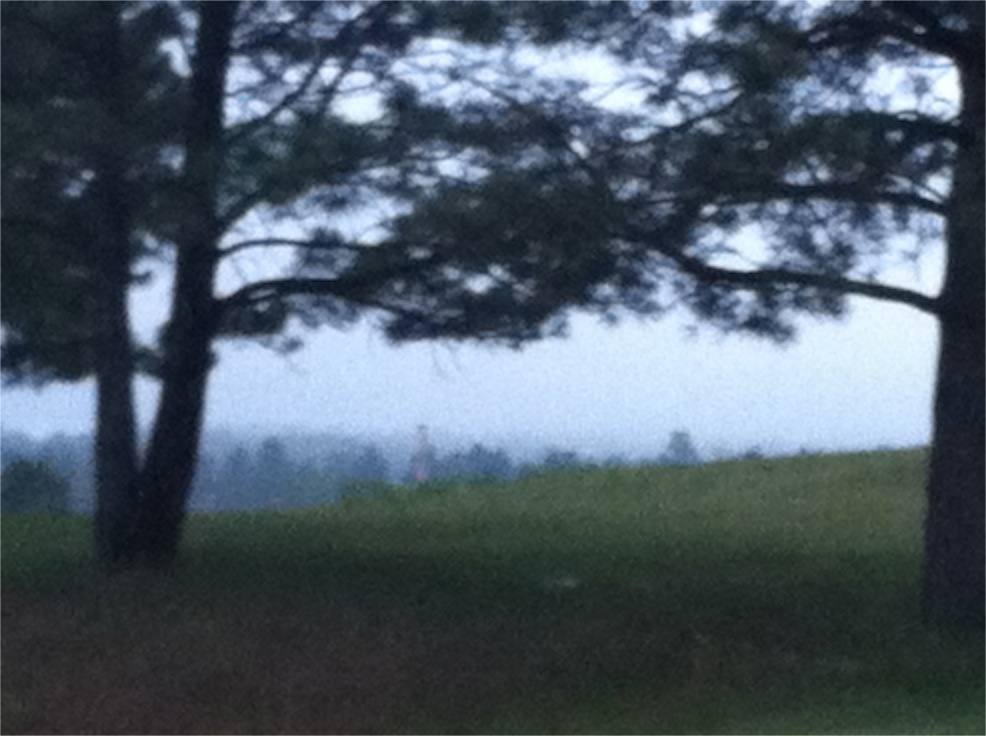
The new day is silver and green and gold this morning. It is fresh and the forecast calls for clouds, which may keep it from getting too hot. A break from the hot and dry days is good for the firefighters, good for the gardeners, and good for our spirits. I can head into the office and make a few phone calls and send a few e-mails to check on the details of last evening and see where I can chip in to help. A good night’s sleep has given me fresh energy for the day that lies ahead.
God doesn’t judge human performance the way that we judge ourselves. God isn’t interested in “measurable outcomes.” God looks upon our hearts and calls us to fresh relationship each day. There is forgiveness for the past and hope for the future in our relationship with God.
And I woke up this morning to a damp world with a song on my heart:
God has created a new day
Silver and green and gold
Live that the sunset may find us
Worthy God’s gifts to hold.
Life is good.
Copyright © 2012 by Ted Huffman. I wrote this. If you want to copy it, please ask for permission. There is a contact me button at the bottom of this page. If you want to share my blog a friend, please direct your friend to my web site.
Fires Still Burning And there has been some rain in Colorado. The Conference Minister of the Rocky Mountain Conference reported that so far no church buildings have been lost, though numbers of members of our congregations have lost their homes and many more still do not know the status of their homes as they wait for a safe time to return to their neighborhoods to check on their homes. There are fires throughout the west. Our church has started a special “Emergency USA” fund to help with recovery for those who have lost homes and a call has gone out for more Church World Service “clean up” and “hygiene” kits. When we are staring through smoky skies and wondering if the rains will ever come, it is easy for us to forget that we are not the only ones experiencing extreme conditions. We are not. In Turkey, firefighters are battling several blazes along the Syrian border. Their efforts have been hampered by intense smoke and the need to keep helicopters back from the border to avoid intensifying the conflict between the nations. Some have theorized that the fires were deliberately set as a means to flush refugees from camps on the Turkish side of the border. More than 35,000 refugees from Syria are in cams near Yayladagi, Turkey and clashes continue on the Syrian side of the border. Syrian activists say that more than 14,000 have been killed since the uprising began in March of 2011. And there are other victims of hot and dry conditions in this world. In Somalia hundreds of thousands of children are at risk of hunger. Poor rains and continuing conflict continue to place people, especially children, at risk of starvation according to the charity Save the Children. Hundreds of thousands of Somalis have fled rural areas, many of which are controlled by Islamist militants who have banned international aid agencies. The aid agencies are still operating in the cities, but it is difficult to get food to those who are most in need. Many Somalis have walked across the borders of the country to camps in Kenya and Ethiopia. Still more have crowded into Mogadishu, the capital of the country, secured by forces of the African Union backed by the United Nations. Somalia has had no effective central government since 1991 and has been wracked by perpetual fighting ever since. Piracy and lawlessness have flourished and the children, who have never known peace, continue to suffer from hunger. Last year, East Africa was hit by the region’s worst drought in 60 years and thousands died. A repeat of that experience appears quite possible as crops fail due to drought conditions this year. A little smoke in the skies seems mild in comparison to the realities others are suffering. Fire is an important symbol in the history of our faith. Moses was called by God at the sight of a burning bush. On Pentecost God’s spirit appeared as tongues of fire resting on the heads of those who were gathered in the upper room. The power of fire has produced awe and wonder in our people for as long as we can remember. The sight of a wildfire is awesome as well. The unpredictability and power of fire commands our attention and our respect. Despite advanced equipment and firefighting techniques, there are times when the fires simply rage beyond control and structures cannot be saved despite the best efforts of the firefighters. The patterns of weather that contribute to the conditions that make the fire also amaze and confound us. Although we have more information to predict weather patterns than previous generations, we are still a long way from fully understanding the patterns of weather that affect life on this earth. Where the rain falls and where it doesn’t can affect the lives of hundreds of thousands of people. As we pray for the victims around the world, we stand in awe of forces that we do not understand. The power of Creation is beyond our ability to comprehend. When we are at our best, we are moved to compassion for those who have had their lives threatened, who have lost their homes and businesses, who have lost their sense of security. May we work with others to provide hospitality to those who are displaced by fire and by violence. May we contribute to bringing food to the hungry. May we offer spiritual support to those in the midst of crisis. Surely the conditions of the world are such that we should be moved to action, contributing in the ways we are able to the relief of others. But there is more. When we are tempted to look inward and complain because of smoke in the skies, when we are feeling sorry for ourselves because our plans for holiday celebrations need to be changed, when we are tempted by self-centeredness, may we open our eyes to the needs of others. Our faith declares that we are not alone. We are connected to others around the world. The same power that brings hope to our darkest hours when others pray with and for us calls us to pray with and for those who suffer in other places as well. Their suffering is not isolated – we are connected to those who suffer in other places as well. May there be fire in our hearts as we are filled with passion to bring the mercy of God to others in this season of suffering and loss.

And there has been some rain in Colorado. The Conference Minister of the Rocky Mountain Conference reported that so far no church buildings have been lost, though numbers of members of our congregations have lost their homes and many more still do not know the status of their homes as they wait for a safe time to return to their neighborhoods to check on their homes.
There are fires throughout the west. Our church has started a special “Emergency USA” fund to help with recovery for those who have lost homes and a call has gone out for more Church World Service “clean up” and “hygiene” kits.
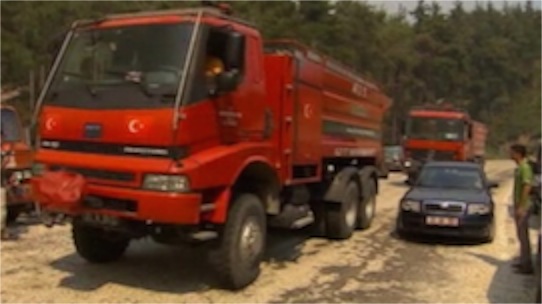

A little smoke in the skies seems mild in comparison to the realities others are suffering.
Fire is an important symbol in the history of our faith. Moses was called by God at the sight of a burning bush. On Pentecost God’s spirit appeared as tongues of fire resting on the heads of those who were gathered in the upper room. The power of fire has produced awe and wonder in our people for as long as we can remember. The sight of a wildfire is awesome as well. The unpredictability and power of fire commands our attention and our respect. Despite advanced equipment and firefighting techniques, there are times when the fires simply rage beyond control and structures cannot be saved despite the best efforts of the firefighters.
The patterns of weather that contribute to the conditions that make the fire also amaze and confound us. Although we have more information to predict weather patterns than previous generations, we are still a long way from fully understanding the patterns of weather that affect life on this earth. Where the rain falls and where it doesn’t can affect the lives of hundreds of thousands of people.
As we pray for the victims around the world, we stand in awe of forces that we do not understand. The power of Creation is beyond our ability to comprehend. When we are at our best, we are moved to compassion for those who have had their lives threatened, who have lost their homes and businesses, who have lost their sense of security. May we work with others to provide hospitality to those who are displaced by fire and by violence. May we contribute to bringing food to the hungry. May we offer spiritual support to those in the midst of crisis. Surely the conditions of the world are such that we should be moved to action, contributing in the ways we are able to the relief of others.
But there is more. When we are tempted to look inward and complain because of smoke in the skies, when we are feeling sorry for ourselves because our plans for holiday celebrations need to be changed, when we are tempted by self-centeredness, may we open our eyes to the needs of others. Our faith declares that we are not alone. We are connected to others around the world. The same power that brings hope to our darkest hours when others pray with and for us calls us to pray with and for those who suffer in other places as well. Their suffering is not isolated – we are connected to those who suffer in other places as well.
May there be fire in our hearts as we are filled with passion to bring the mercy of God to others in this season of suffering and loss.
Copyright © 2012 by Ted Huffman. I wrote this. If you want to copy it, please ask for permission. There is a contact me button at the bottom of this page. If you want to share my blog a friend, please direct your friend to my web site.
July 4, 2012
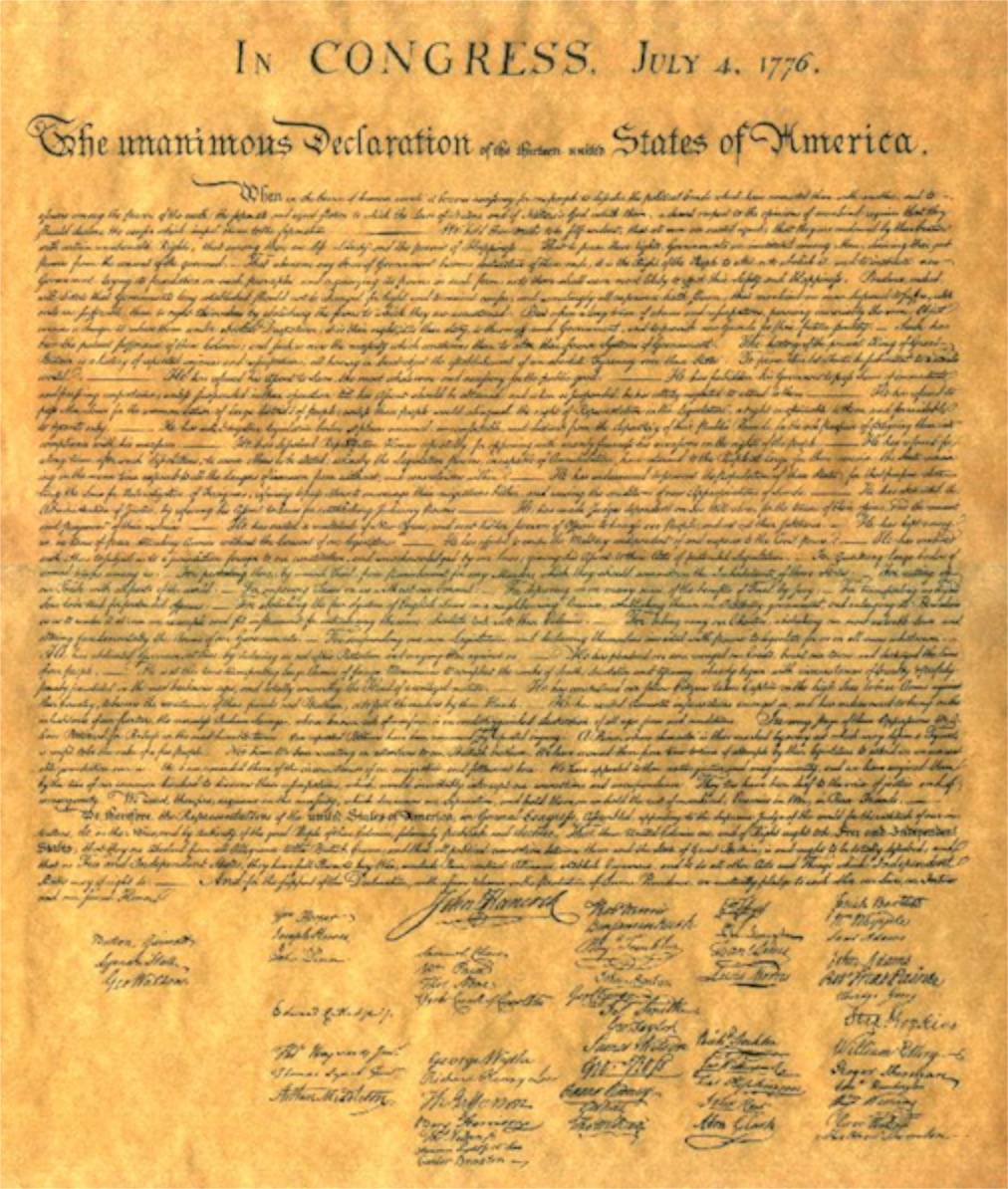
There are moments in history that bring out the best in people. Circumstances demand the highest and best of the human spirit and individuals and groups rise above what they might otherwise have become. 236 years after the signing of the Declaration of Independence, the document and the nation that was founded upon it remain one of the high points of human history. The signers of the Declaration weren’t the first people in human history to seek freedom and equality, liberty and union. They weren’t the first to rise up against authoritarian rule. Nor were they the last. They are remembered, in part, because they were successful. Had their revolution been crushed things would be so different that it is pointless to speculate on what impact they may have had on history.
Because they were not only successful, but also articulate we have not only the privilege of living in the country they founded but also the document that spells out the reasons and the basic principles behind their actions. It is a rare privilege on both counts. Out of more than 7 billion people who occupy the planet, roughly 300 million live in the United States. 95.7% of the people on this planet live in other places with other governments, many of them suffering under repressive regimes and experiencing gross inequalities in distribution of essential resources.
Our forebears based their independence upon the principle of equality. “We hold these truths to be self-evident, that all men are created equal, that they are endowed by their Creator with certain unalienable Rights, that among these are Life, Liberty and the pursuit of Happiness.” The purpose of government, they stated, is to secure those rights. They went on to list specific examples of the King of England’s failure to provide those rights to the people under his rule.
The document holds in tension some very difficult concepts. As Alexis de Tocqueville and others have noted, the document venerates both liberty and equality. De Tocqueville believed that this tension would ultimately lead to favoring one over the other. In democracy, he argued, Americans would favor equality over freedom because its material benefits are more immediate and tangible. Others argued that the choice would be freedom over equality because of the way freedom is highly valued. James Q. Wilson and others argued that freedom is the highest held value of Americans.
The choice: freedom vs. equality is, of course, a false choice. Despite the articulate statements of historians and political scientists, freedom isn’t freedom unless it is available to all. It was one of the bloodiest lessons this nation had to learn. The new nation accepted slavery as a legal principle in 1787, violating the ideals put forth in the Declaration. It took over three-quarters of a century for the nation to understand that the institution of slavery not only severely restricted the freedom and oppressed those enslaved. It also limited the freedom of the slaveholders. It is a basic principle of Exodus: as long as one remains enslaved, no one else can be free. Freedom does not truly exist when some are not free.
Somehow, the authors of the Declaration got it right, despite the prevailing political theories of the time and of subsequent generations. They enshrined both freedom and equality in the document. It is not, in the eyes of the signers of the Declaration of Independence, a choice of “either-or.” It is, rather, the requirement of “both-and.”
Of course their words were loftier than our realities. The high sentiments of the Declaration overlooked the rights of women. It was more than 144 years after the signing of the Declaration for this nation to grant voting rights to women. For more than half the population of the country, Independence day was August 26, 1920, when the Nineteenth Amendment to the Constitution finally granted women the right to equal participation in the political process.
There are many in today’s political and media circles who would argue that we have to choose between liberty and equality. The bitter polarization portrayed by the media emphasizes extremes and denies the spirit of the founders of our country. If you were to listen to the media, you might come to believe that we are a nation with only two points of view: On the one hand are the promoters of equality who are said to be bent on inserting government into every aspect of our lives and suffocating individual responsibility and effort. On the other hand are the promoters of liberty who are beholden to the rich, committed to the survival of the fittest and indifferent to the basic human needs of everyone except themselves.
The characterizations are, of course, false. We are not a nation of “either-or.” We are a nation of “both-and.” The framers of the Declaration of Independence got it right. The pursuit of liberty without equality is a dead end. Not only would equality be crushed, liberty also would be denied. The same is true of the pursuit of equality without liberty. It does not exist. Only when both liberty and equality are seen to be of equal value is progress made on either front.
The poisoned climate of contemporary American politics is not always honest about history. People are quick to claim that their political causes are consistent with the ideals of the nation’s founders. Since unfair taxes and excessive regulation are mentioned in the Declaration of Independence, some claim that the founders were completely anti-tax and in favor of complete deregulation. Because the Declaration mentions denial of fair trials and acts of violence against citizens, some claim that the founders were advocating the role of government in providing for the health and welfare of all citizens. It is often the result of complex thinking that others will quote only part of an idea and claim that their part contains the entire truth.
Today, as we celebrate our nation’s Day of Independence, I am grateful for the complex ideas of our founders and their ability to hold in tension concepts that seem, on the surface, to be on opposition. They have given us an amazing document, worthy of regular reading. The document isn’t perfect. The people who crafted it were not either. We have had to revise our thinking on the role of women, indigenous Americans, and the descendants of former slaves in our quest for freedom and equality. But the crafting of the document was a major leap forward in the evolution of human governments and of our thinking about the role of government in our lives.
Sometimes people rise above history and offer the highest and best of humanity. Perhaps the time has come for the participants in the divisive and bitter disputes that polarize our nation to rise above the fray of the current battles and be reminded of the high and lofty ideals to which we together aspire.
Copyright © 2012 by Ted Huffman. I wrote this. If you want to copy it, please ask for permission. There is a contact me button at the bottom of this page. If you want to share my blog a friend, please direct your friend to my web site.
Searching for God
That might be the result of a somewhat inflated ego. Chances are that most physicists have no interest whatsoever in pastors and theologians. And there are plenty of pastors and theologians who are more distinguished and more well known than I.
Still, the work of theoretical physicists fascinates me. I think it is because it sounds, to a layman, a lot like theology. They advance theories about how the nature of the universe might be organized then they go looking for physical evidence to back up their theories. If they find evidence, they refine the theories to explain even a bit more. If they do not find evidence, they either modify the theory or come up with a more elaborate explanation for why the universe isn’t the way they initially described.

It was theoretical physics that gave us chaos theory. Well, I guess that isn’t quite right. Chaos theory is technically an area of mathematics that has applications in physics. According to chaos theory, small differences in initial conditions, such as rounding errors, yield widely diverging outcomes for chaotic systems, rendering long-term prediction impossible.
Mathematicians and physicists don’t exactly mean the same thing when they use the term “chaos” as the generally accepted definition. They don’t quite mean “a state of disorder.” They just mean “unpredictable.”
Physicists have other terms they use in ways that are distinct from the way I use them. I keep reading about the search for the “god particle.” They don’t mean what I mean when I use the term, “God.” In fact, I guess the term “god particle” isn’t really used by physicists. It is used by laypersons to describe what physicists are doing with the billions (yes billions) of dollars invested in some really big experiments.
Let me interrupt this with a disclaimer – when I try to explain physics it seems to sort of make sense to me, but it is only mildly amusing to real experts in the field, who see quickly that I really don’t understand their way of thinking.
When I was in elementary school, we learned that everything is made from molecules. Molecules are groups of atoms. Inside an atom is a nucleus surrounded by electrons. I think that is as far as we got in grade school. Somewhere later, I learned that inside the nucleus are protons and neurons. That was pretty much the state of the building blocks of the physical universe in my limited education.
Somewhere along the line I learned that protons and neurons are made out of quarks. There are different kinds of quarks – at least six: up and down, charm and strange, top and bottom. OK, I’m not making this up. They really talk that way. Up and down, even top and bottom sound like scientific distinctions, though the difference between up and top or down and bottom eludes me. But charm and strange are rather random terms to describe the fundamental building blocks of the universe, if you want my opinion. Of course the scientists do not want my opinion. So I really don’t understand this, except to say that I get it that there are different kinds of quarks.
Here is the thing. Quarks aren’t the only tiny particles that made up protons and neurons. There are also leptons and bosons.
Theoretical physicists love bosons. They come in different types as well. One of the types of bosons is called a gluon. Another boson has been called the Higgs Boson. Except no one can see a boson or a quark or a lepton. They just have a theory that they exist because if they do, they would have mass and the mass would imply a small gravitational flow and that might explain the movement of protons and neurons within the nucleus of an atom.
So someone started calling the Higgs Boson the “god particle.” The theory is that if they could prove the existence of the Higgs Boson they could explain why certain tiny movements within the nucleus of an atom are the way they are.
So, they got enough people interested in all of this to raise $4 billion to build the Large Hadron Collider and have 10,000 scientists working on experiments to prove or disprove the existence of the Higgs Boson. If this sounds a bit amazing to you, welcome to the club. I am astounded that so much money and so many people could be engaged in theoretical research of this type. One thing about it, physicists are better fund-raisers than theologians in our generation.
And there are people who think that church buildings are extravagant institutions.
Here is what I know. They might be able to prove or disprove the existence of the Higgs Boson particle. They won’t be able to explain everything in the universe. A comprehensive, all-encompassing theory that explains everything will elude scientists in our time and for millennia to come. The universe is far more complex than our powers of comprehension.
I also know that physics is as based in myth and story as is theology. They just happen to have different myths and stories.

One more thing that I know: there is no field of study that doesn’t lead towards wonder and awe. This amazing universe is the creative product of God who is grander, greater, and more amazing than we can imagine. That doesn’t keep us from trying to imagine. It doesn’t keep us from advancing our theories. It doesn’t keep us from trying to comprehend.
In the end, physicists and theologians are all engaged in the same quest for understanding. We use different language and advance different theories. But in the end we share the simple truth: “From God we have come. To God we return.” Of course that’s my language – the language of theology. I’m not sure how it goes in physics. Perhaps: “All is made of Higgs Boson, from the simplest element to the complexity of the universe.”
They don’t like to use the word, but they’re searching for God as much as I am.
Copyright © 2012 by Ted Huffman. I wrote this. If you want to copy it, please ask for permission. There is a contact me button at the bottom of this page. If you want to share my blog a friend, please direct your friend to my web site.
Anticipating July 4
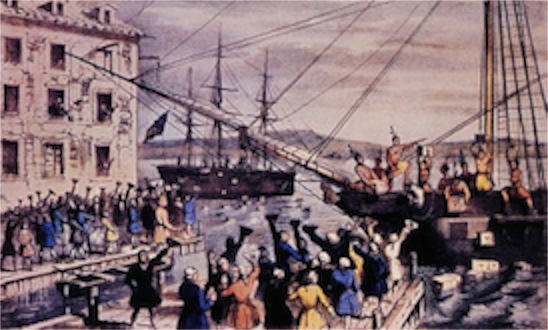
Regardless of the opinion about the use of contraception and how its costs should be paid, a church like ours might ring our bell on July 4, but if we were to do so, it would be because our members want to ring the bell, not because a council of bishops has directed churches to ring their bells. We see the topic of religious freedom differently than some of our neighbors. The 17 signers of the Declaration of Independence who were members of the Congregational Church all saw freedom from a hierarchical church structure as an essential religious freedom.
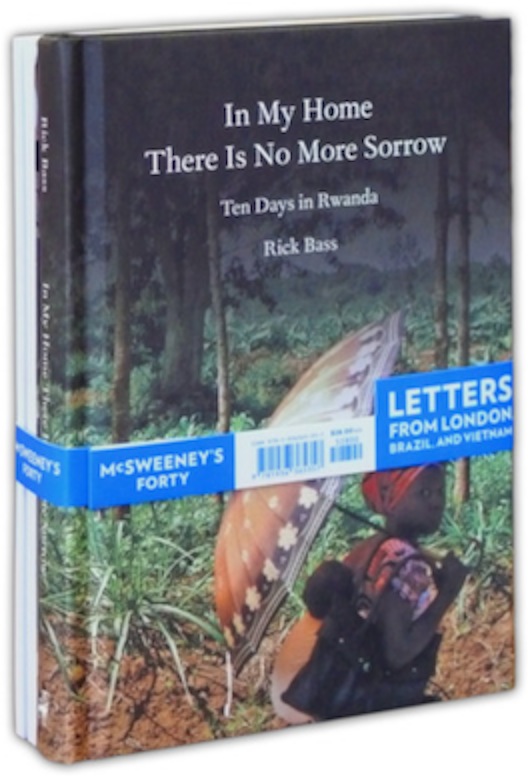

It is in a place like that where the horror of genocide becomes unmistakably real. Just reading about it makes it impossible for me to celebrate Independence Day without being reminded of the intense cruelty of which humans are capable. For millions of Rwandans it is a day to thinking of relatives – beloved parents, brothers and sisters and others who were mercilessly killed. Every victim never had the opportunity to know the true meaning of freedom. Every victim was deprived of “life, liberty, and the pursuit of happiness.”
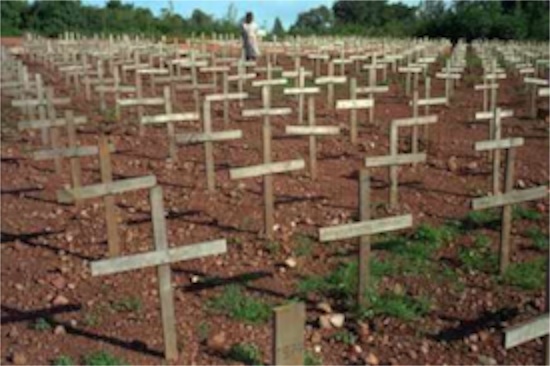
In April, President Obama announced the formation of an Atrocities Prevention Board during a ceremony at the Holocaust Memorial Museum. The newly-formed board has been given the task to developing strategies for the United States government to take actions to prevent and intervene to stop mass atrocities. It may well be the most important thing our government can do. If we are to truly enjoy our independence, we must understand that our freedom is linked to the freedom of all people. As long as some people are denied freedom, no one is truly free.
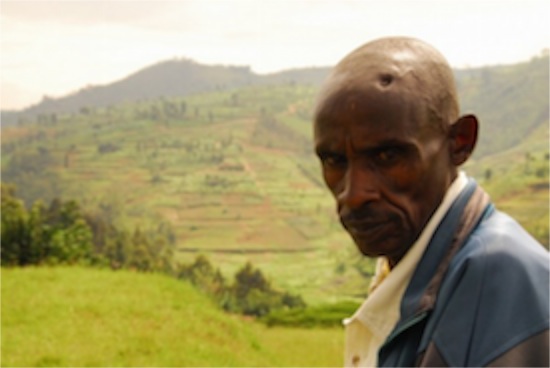
Copyright © 2012 by Ted Huffman. I wrote this. If you want to copy it, please ask for permission. There is a contact me button at the bottom of this page. If you want to share my blog a friend, please direct your friend to my web site.
Heaven is Morning
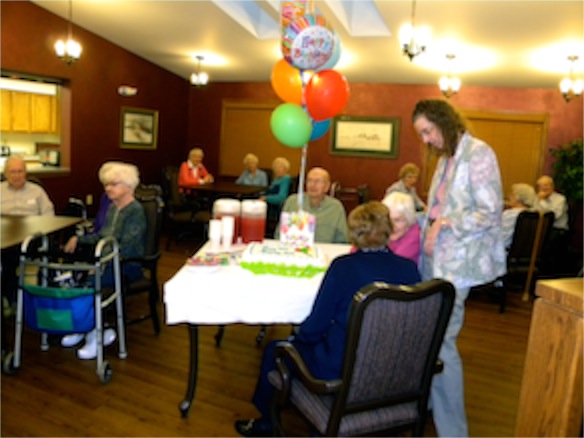
I miss their stories. They all had stories to tell.
Art studied electrical engineering in college. When the war came, he served in Africa and Europe. After his foreign service, he was stationed in Texas, a time he referred to as “my second foreign tour of duty.” Then he came back to this area and became a banker. He worked banks in Miles City, Montana, and Hettinger, North Dakota, before coming back to the Black Hills. Banking is not a calling that has ever appealed to me. Like many others, I do my business with the bank, but never thought of it as a place where I would like to go to work every day. Art, however, was well suited for the job because he loved the people. His stories about banking had little to do with interest rates and balance sheets. They are stories of the endless parade of people who walked through the doors of the bank.
Still, one might not expect Art to be a man who did a lot of theological thinking. I don’t remember him speaking much about his faith, though he was a regular attendee at the monthly services I lead at the assisted living center. He would smile and participate in the service.
I was surprised to discover that he had written hymns. He never wrote music, but wrote words that could be sung to familiar hymn tunes. A few of us gathered in the Belle Fourche cemetery yesterday for the committal of Art’s ashes. Susan officiated. I stood in the shade of one of the magnificent pine trees that grow on that slope, with enough breeze to keep things from being too hot. And I listened. It seemed very natural. I did a lot of listening in the days when I visited with the trio of men at the assisted living center. Art’s daughter-in-law had a small set of speakers that she attached to her phone to play Amazing Grace and one of Art’s hymns. It was set to the tune of “Morning Has Broken.” Eleanor Farjeon wrote the words we know in the early 1930’s. The tune is a traditional Gaelic tune known by “Bunessan.” I love the hymn. But I was struck by Art’s words:

Heaven is morning.
Just as at dawning there comes a great light,
When we are passing into God’s love.
Heaven like morning will start a new day
Fear not departing to Christ above.
I like the image of the song. I’ve always been a morning person. I like to rise in the wee hours. I write my daily blog by 5:30 a.m. most mornings. Sometimes I just go outside and look to the east. We have a good sunrise view from our home. I love to go out to a lake for an early paddle or row. When I go through the pictures on my camera, I am struck at how many are pictures of the sunrise. Each sunrise is unique. Each brings promise of the things that are to come.
When I have had times in my life that have been filled with problems, the problems almost always seem more intense and troubling in the evening than they do in the morning. After sleeping, my head is clearer and my capacities for problem solving are renewed. People seem less like problems and more like gifts in the morning. I wonder if this change in attitude is due to the effects of sleep, or simply a product of the fact that I like to rise before other people. I have the mornings to myself most days. I am often awake an hour or more before someone else in my home rises. I can go to the office and get in a couple of hours of work before the phone rings for the first time or anyone else walks into the building. Morning is also a gift of solitude for me.
I like other people. I am grateful that my job involves working with so many interesting and creative people. I enjoy the challenge of working with a job that is too big for an individual to accomplish. There is joy in knowing that the work I do did not begin with me and will not be completed when my time on this earth has come to its end. There is security in knowing that God has more to be done, more to be accomplished and that I belong to a line of history-making that extends far beyond the span of a single lifetime.
So for me heaven as morning just makes sense. It is an image that inspires me. And, every morning, I get a little glimpse – a small taste – of the goodness that lies ahead.